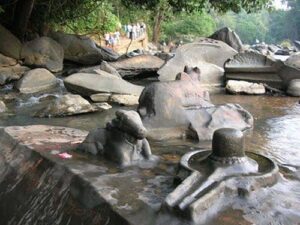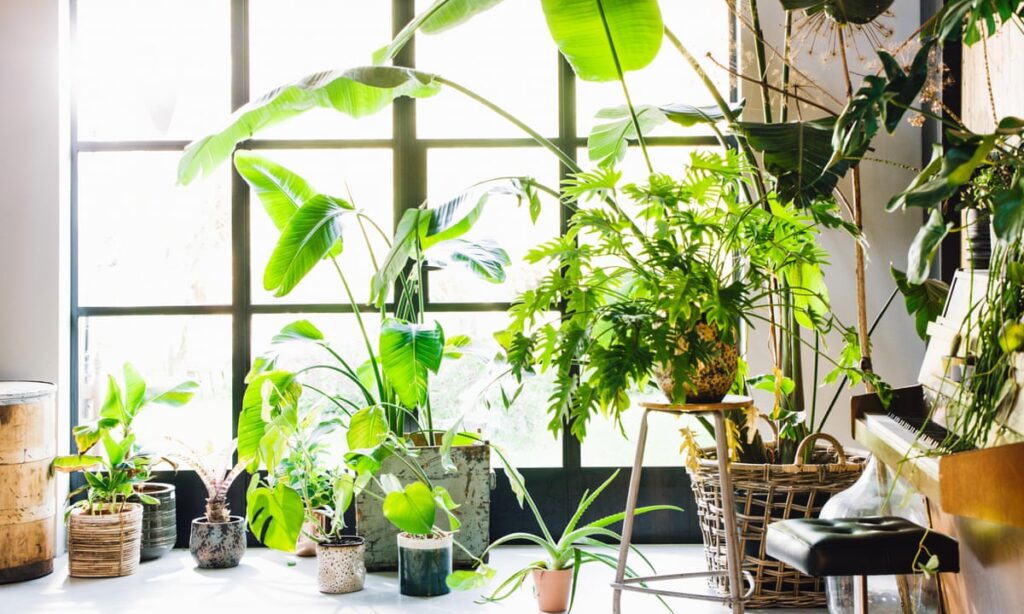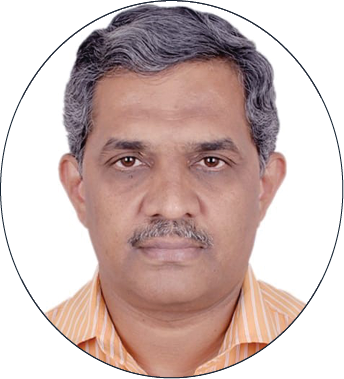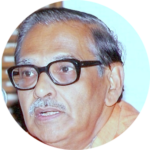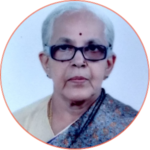 ನಾನು 1968ರಿಂದಲೇ ದೆಹಲಿಯಲ್ಲಿ ಇದ್ದೇನೆ. ಆ ಸಮಯದಲ್ಲಿ ದೆಹಲಿ ತುಂಬಾ ಚೆನ್ನಾಗಿತ್ತು. ಈಗಿನಂತೆ ಅತ್ಯಾಚಾರ, ಹಿಂಸಾಚಾರಗಳೆಲ್ಲಾ ಇರುತ್ತಿರಲಿಲ್ಲ – ಅದರ ಕುರಿತು ಕೇಳಿಬರುತ್ತಿರಲಿಲ್ಲ. ಆಗ ನಮಗೆ ಹೆಚ್ಚು ಜನ ಹವ್ಯಕರನ್ನು ಪರಿಚಯವಿರಲಿಲ್ಲ. ಬಹುಶ: ಕಡಿಮೆ ಸಂಖ್ಯೆಯಲ್ಲದ್ದರೆಂದು ನಾನು ಭಾವಿಸಿದ್ದೆ. ಮತ್ತೆ ಮತ್ತೆ, ಉದ್ಯೋಗದಲ್ಲಿ ಹೊಸತಾಗಿ ಬಂದವರನ್ನು ಪರಿಚಯವಾಗುತ್ತಿತ್ತು. ಗೋಕರ್ಣ ಮಂಡಳಿಯ ಪ್ರಾರಂಭವಾದ ಮೇಲೆ ಪ್ರತಿ ವರ್ಷವೂ ಒಂದೊಂದು ‘ ಪಿಕ್ನಿಕ್ ‘ ಇರುತ್ತಿತ್ತು. ಬೇರೆ ಬೇರೆ ಪಾರ್ಕುಗಳಲ್ಲಿ ಒಟ್ಟು ಸೇರುತ್ತಿದ್ದೆವು.ಆ ಕಾಲದಲ್ಲಿ ಎಲ್ಲರೂ ಮನೆಯಿಂದ ಏನಾದರೂ ಅಡಿಗೆ ತಿಂಡಿ ಮಾಡಿಕೊಂಡು ಹೋಗುತ್ತಿದ್ದೆವು.ಅಲ್ಲಿ ಮಕ್ಕಳಿಗೆ ಕೆಲವು ಪಂದ್ಯ ಸ್ಪರ್ಧೆಗಳನ್ನು ಮಾಡಿ, ಅದರಲ್ಲಿ ಗೆದ್ದವರಿಗೆ ಏನಾದರೂ ಬಹುಮಾನ ಕೊಡುತ್ತಿದ್ದರು. ಹಾಗೆ ಹೋಗುವುದು ಮಕ್ಕಳಿಗೆ ತುಂಬಾ ಸಂತೋಷವಾಗುತ್ತಿತ್ತು. ನಾವು, ನನ್ನ ಮೈದುನಂದಿರೂ, ಮೋತೀಬಾಗ್ ನಲ್ಲಿ ವಾಸಿಸುತ್ತಿದ್ದೆವು. ಈಗ ನಾವು ಮಯೂರ್ ವಿಹಾರ್ ನಲ್ಲಿ ಇರುವುದು. ನಮ್ಮ ಮಕ್ಕಳು ದೆಹಲಿಯಲ್ಲಿಯೇ ಉದ್ಯೋಗದಲ್ಲಿದ್ದಾರೆ.
ನಾನು 1968ರಿಂದಲೇ ದೆಹಲಿಯಲ್ಲಿ ಇದ್ದೇನೆ. ಆ ಸಮಯದಲ್ಲಿ ದೆಹಲಿ ತುಂಬಾ ಚೆನ್ನಾಗಿತ್ತು. ಈಗಿನಂತೆ ಅತ್ಯಾಚಾರ, ಹಿಂಸಾಚಾರಗಳೆಲ್ಲಾ ಇರುತ್ತಿರಲಿಲ್ಲ – ಅದರ ಕುರಿತು ಕೇಳಿಬರುತ್ತಿರಲಿಲ್ಲ. ಆಗ ನಮಗೆ ಹೆಚ್ಚು ಜನ ಹವ್ಯಕರನ್ನು ಪರಿಚಯವಿರಲಿಲ್ಲ. ಬಹುಶ: ಕಡಿಮೆ ಸಂಖ್ಯೆಯಲ್ಲದ್ದರೆಂದು ನಾನು ಭಾವಿಸಿದ್ದೆ. ಮತ್ತೆ ಮತ್ತೆ, ಉದ್ಯೋಗದಲ್ಲಿ ಹೊಸತಾಗಿ ಬಂದವರನ್ನು ಪರಿಚಯವಾಗುತ್ತಿತ್ತು. ಗೋಕರ್ಣ ಮಂಡಳಿಯ ಪ್ರಾರಂಭವಾದ ಮೇಲೆ ಪ್ರತಿ ವರ್ಷವೂ ಒಂದೊಂದು ‘ ಪಿಕ್ನಿಕ್ ‘ ಇರುತ್ತಿತ್ತು. ಬೇರೆ ಬೇರೆ ಪಾರ್ಕುಗಳಲ್ಲಿ ಒಟ್ಟು ಸೇರುತ್ತಿದ್ದೆವು.ಆ ಕಾಲದಲ್ಲಿ ಎಲ್ಲರೂ ಮನೆಯಿಂದ ಏನಾದರೂ ಅಡಿಗೆ ತಿಂಡಿ ಮಾಡಿಕೊಂಡು ಹೋಗುತ್ತಿದ್ದೆವು.ಅಲ್ಲಿ ಮಕ್ಕಳಿಗೆ ಕೆಲವು ಪಂದ್ಯ ಸ್ಪರ್ಧೆಗಳನ್ನು ಮಾಡಿ, ಅದರಲ್ಲಿ ಗೆದ್ದವರಿಗೆ ಏನಾದರೂ ಬಹುಮಾನ ಕೊಡುತ್ತಿದ್ದರು. ಹಾಗೆ ಹೋಗುವುದು ಮಕ್ಕಳಿಗೆ ತುಂಬಾ ಸಂತೋಷವಾಗುತ್ತಿತ್ತು. ನಾವು, ನನ್ನ ಮೈದುನಂದಿರೂ, ಮೋತೀಬಾಗ್ ನಲ್ಲಿ ವಾಸಿಸುತ್ತಿದ್ದೆವು. ಈಗ ನಾವು ಮಯೂರ್ ವಿಹಾರ್ ನಲ್ಲಿ ಇರುವುದು. ನಮ್ಮ ಮಕ್ಕಳು ದೆಹಲಿಯಲ್ಲಿಯೇ ಉದ್ಯೋಗದಲ್ಲಿದ್ದಾರೆ.
ಸ್ವಲ್ಪ ಸಮಯ ಕಳೆದ ಮೇಲೆ ಪ್ರತಿ ವರ್ಷವೂ ದಸರಾದಲ್ಲಿ ಶಾರದಾ ಪೂಜೆಯನ್ನು ದೆಹಲಿ ಕನ್ನಡ ಶಾಲೆಯಲ್ಲಿ ನೆರವೇರಿಸಿ ಎಲ್ಲರೂ ಅಲ್ಲಿ ಒಟ್ಟು ಸೇರುತ್ತಿದ್ದೆವು. ಗೋಕರ್ಣ ಮಂಡಳಿಯ ಪೂಜೆಗೆ ಬಂದವರಿಗೆ ಮಧ್ಯಾಹ್ನದ ಊಟ ಕನ್ನಡ ಶಾಲೆಯ ‘ ಕ್ಯಾಂಟೀನ್ ‘ ನಲ್ಲಿ ತಯಾರಿಸುವ ಏರ್ಪಾಡು ಮಾಡುತ್ತಿದ್ದರು. ಹಾಗೆ ವರ್ಷದಲ್ಲಿ ಒಂದು ಸರ್ತಿ ಹವ್ಯಕರು ಹೆಚ್ಚಿನವರು ಒಟ್ಟು ಸೇರುತ್ತಿದ್ದೆವು. ಆಗ ಹೊಸತಾಗಿ ಬಂದವರನ್ನೂ ಪರಿಚಯವಾಗುತ್ತಿತ್ತು. ಗೋಕರ್ಣ ಮಂಡಳಿಗೆ ನನ್ನವರೂ, ನನ್ನ ಮೈದುನಂದಿರೂ ತುಂಬಾ ಕೆಲಸ ಮಾಡುತ್ತಿದ್ದರು. ವರ್ಷದಲ್ಲಿ ಒಂದು ದಿನವಾದರೂ ಎಲ್ಲರೂ ಒಟ್ಟು ಸೇರಿ ಇಡೀ ದಿನ ಅಲ್ಲಿ ಕಳೆದು ಸಾಯಂಕಾಲ ಮನೆ ಸೇರುತ್ತಿದ್ದೆವು. ಎಲ್ಲರೂ ತುಂಬಾ ಖುಷಿ ಪಡುತ್ತಿದ್ದರು.
ಇದೇ ರೀತಿ ನಮ್ಮ ಹವ್ಯಕರ ಗೋಕರ್ಣ ಮಂಡಳಿಯು ಇನ್ನೂ ಚೆನ್ನಾಗಿ ಮುನ್ನಡೆಯುತ್ತಿರಲಿ ಎಂದು ಹಾರೈಸುತ್ತೇನೆ.
ವೆಂಕಟೇಶ್ವರಿ ಭಟ್
 I wish to congratulate the office-bearers and the members of the Executive Council of the Gokarna Madnala for launching its official website and also E-Gokarnavani. This will go a long way in communicating not only with the members of Mandala, but also with the larger world. Mandala has a legacy of over five decades and for this reason it is apt now to institutionalize and propagate its activities in an accessible website. The Scholarship programme of the Mandala to needy Havyaka children is timely and laudable. This needs to be highlighted to reach out to aspiring students. I have been part of it over three decades and have seen its illustrious members contributing, amidst their busy professional and other preoccupations, to the life and times of Delhi and its Kannadigas. I wish to recall with pride selfless and unblemished services of some of the Mandala members to build and strengthen Delhi Karnataka Sangha and Delhi Kannada School. Besides this, their contribution over two or three generations as academicians, doctors, engineers, in government and other professional services should also be celebrated. The proposed Gokarnavani in E-format will also be a great addition to share some of these achievements on a regular basis. I extend my gratitude and best wishes.
I wish to congratulate the office-bearers and the members of the Executive Council of the Gokarna Madnala for launching its official website and also E-Gokarnavani. This will go a long way in communicating not only with the members of Mandala, but also with the larger world. Mandala has a legacy of over five decades and for this reason it is apt now to institutionalize and propagate its activities in an accessible website. The Scholarship programme of the Mandala to needy Havyaka children is timely and laudable. This needs to be highlighted to reach out to aspiring students. I have been part of it over three decades and have seen its illustrious members contributing, amidst their busy professional and other preoccupations, to the life and times of Delhi and its Kannadigas. I wish to recall with pride selfless and unblemished services of some of the Mandala members to build and strengthen Delhi Karnataka Sangha and Delhi Kannada School. Besides this, their contribution over two or three generations as academicians, doctors, engineers, in government and other professional services should also be celebrated. The proposed Gokarnavani in E-format will also be a great addition to share some of these achievements on a regular basis. I extend my gratitude and best wishes.
Dr. Venkatachala G. Hegde
Former President, Delhi Karnataka Sangha,
Professor & Chairperson,
Centre for International Legal Studies,
School of International Studies,
Jawaharlal Nehru University (JNU)
New Delhi
Silver Linings
(An Appeal!)

This is about an organisation for the visually impaired girls. Silver Linings is not a profit-making organisation, but working towards the empowerment of visually impaired, especially girls. They provide them education, training and employment. They also have the residential facility where the girls are trained to become independent and responsible citizens and lead a respectable life.
Preeti Monga [Founder and CEO of Silver Linings Services], visually challenged herself, has been working relentlessly for over three decades to improve the lives of visually impaired children, empowerment of women and inclusion of people with disability into the main stream. She has impacted millions of lives directly / indirectly during this period.
Preeti is the first visually impaired Aerobics Instructor in India, a celebrated motivational speaker and a highly effective counsellor. She has been awarded the National Award, presented to her by the President of India, for her ground breaking work towards employment and self-employment of people with disabilities and many others. A successful entrepreneur, Preeti, has been persistently working on the issue of equal rights for the people with special needs. She also counsels people on the benefits of healthy diet and living.
Preeti has authored two autobiographies, namely, The Other Senses published by Roli books in 2012, and Flight without Sight published by Hay House in 2018. Her work includes educating and training visually impaired girls, supporting employment of disabled, corporate training, facilitating Cornea donation, empowering visually challenged women via project Dignity and Trauma Counselling.
Interestingly, Preeti was forced to leave the scool at the age 12 and her formal education is only till high school. Inspired by Helen Keller, Preeti exudes unique, unlimited positive energy which motivates others.
I am really thankful to the senior members of Gokarna Mandala who have donated generously to Silver Linings. It will go a long way in helping the children.
I request the readers to contribute to the mission Preeti has undertaken. Your support and blessings will help to build the lives of visually impaired children
All donations to Silver Linings are exempted from tax under section 80 G of the Income Tax act.
You can contribute via bank transfer or PayTm or Google pay on 9810501646
You may also send your donations to the Silver Linings bank directly:
Banking details:
SILVER LININGS TRUST Donations from India
Account Name for Remittance of
Funds Silver Linings
Account No. 11292011013360
Bank Name Punjab National Bank
NEFT IFSC Code PUNB0112910
MICR Code 110024619
Type of Account-Saving
Do make use of the wonderful opportunity to light up the world of the visually impaired so that they can one day grow up and light up worlds of others like them.
|| ಶುಭಾಶಿಷಃ ||
 ತಮಗೆಲ್ಲರಿಗೂ ತಿಳಿದಿರುವಂತೆ ಬೇರೆ ಬೇರೆ ಊರುಗಳಿಂದ ಉದ್ಯೋಗವನ್ನರಸಿ ಭಾರತದ ರಾಜಧಾನಿ ದೆಹಲಿಯಲ್ಲಿ ನೆಲೆಸಿರುವ ಹವ್ಯಕ ಬಾಂಧವರ ಪ್ರೇರಣೆಯಿಂದ ಹವ್ಯಕರಿಗಾಗಿ ಸ್ಥಾಪಿಸಲ್ಪಟ್ಟ ‘ಗೋಕರ್ಣಮಂಡಲ’ ಕಳೆದ 43 ವರ್ಷಗಳಿಂದ ಸಾಂಸ್ಕೃತಿಕ, ಧಾರ್ಮಿಕ ಇತ್ಯಾದಿ ಕಾರ್ಯಕ್ರಮಗಳನ್ನು ನಡೆಸುತ್ತಾ ಬಂದಿದೆ. ಕಾಲಮಾನಕ್ಕನುಗುಣವಾಗಿ ಅಥವಾ ಭವಿಷ್ಯದ ಪರಿಸ್ಥಿತಿಗನುಗುಣವಾಗಿ ನಮ್ಮ ಸಂಘವು ಅಂತರ್ಜಾಲಪುಟವನ್ನು ಪ್ರಾರಂಭಿಸುವ ಚಿಂತನೆ ತುಂಬಾ ಸ್ವಾಗತಾರ್ಹವಾಗಿದ್ದು ಇದೇ ಬರುವ ದಿನಾಂಕ 15-01-2022 ರಂದು ಉತ್ತರಾಯಣದ ಪುಣ್ಯಕಾಲದಲ್ಲಿ ‘ಗೋಕರ್ಣಮಂಡಲ.ಇನ್’ ಎಂಬ ಅಂತರ್ಜಾಲಪುಟವನ್ನು ಉದ್ಘಾಟಿಸಿ ಅದರ ಸದುಪಯೋಗವನ್ನು ನಾವೆಲ್ಲರೂ ಪಡೆದುಕೊಳ್ಳೋಣ ಎಂಬುದಾಗಿ ಆಶಿಸುತ್ತಾ ಪರಿಪೂರ್ಣ ಜೀವನ ಎಲ್ಲರದಾಗಲಿ, ಜೀವನದಲ್ಲಿ ಎಲ್ಲರೂ ಆನಂದವನ್ನು ಅನುಭವಿಸುವ ಯೋಗ-ಯೋಗ್ಯತೆ ಪಡೆದುಕೊಳ್ಳಲಿ. “ಸರ್ವೇ ಭದ್ರಾಣಿ ಪಶ್ಯಂತು” ಎಲ್ಲರೂ ಮಂಗಲಮಯವಾದುದನ್ನು ನೋಡುವಂತಾಗಲಿ. “ಲೋಕಾಃ ಸಮಸ್ತಾಃ ಸುಖಿನೋ ಭವಂತು”
ತಮಗೆಲ್ಲರಿಗೂ ತಿಳಿದಿರುವಂತೆ ಬೇರೆ ಬೇರೆ ಊರುಗಳಿಂದ ಉದ್ಯೋಗವನ್ನರಸಿ ಭಾರತದ ರಾಜಧಾನಿ ದೆಹಲಿಯಲ್ಲಿ ನೆಲೆಸಿರುವ ಹವ್ಯಕ ಬಾಂಧವರ ಪ್ರೇರಣೆಯಿಂದ ಹವ್ಯಕರಿಗಾಗಿ ಸ್ಥಾಪಿಸಲ್ಪಟ್ಟ ‘ಗೋಕರ್ಣಮಂಡಲ’ ಕಳೆದ 43 ವರ್ಷಗಳಿಂದ ಸಾಂಸ್ಕೃತಿಕ, ಧಾರ್ಮಿಕ ಇತ್ಯಾದಿ ಕಾರ್ಯಕ್ರಮಗಳನ್ನು ನಡೆಸುತ್ತಾ ಬಂದಿದೆ. ಕಾಲಮಾನಕ್ಕನುಗುಣವಾಗಿ ಅಥವಾ ಭವಿಷ್ಯದ ಪರಿಸ್ಥಿತಿಗನುಗುಣವಾಗಿ ನಮ್ಮ ಸಂಘವು ಅಂತರ್ಜಾಲಪುಟವನ್ನು ಪ್ರಾರಂಭಿಸುವ ಚಿಂತನೆ ತುಂಬಾ ಸ್ವಾಗತಾರ್ಹವಾಗಿದ್ದು ಇದೇ ಬರುವ ದಿನಾಂಕ 15-01-2022 ರಂದು ಉತ್ತರಾಯಣದ ಪುಣ್ಯಕಾಲದಲ್ಲಿ ‘ಗೋಕರ್ಣಮಂಡಲ.ಇನ್’ ಎಂಬ ಅಂತರ್ಜಾಲಪುಟವನ್ನು ಉದ್ಘಾಟಿಸಿ ಅದರ ಸದುಪಯೋಗವನ್ನು ನಾವೆಲ್ಲರೂ ಪಡೆದುಕೊಳ್ಳೋಣ ಎಂಬುದಾಗಿ ಆಶಿಸುತ್ತಾ ಪರಿಪೂರ್ಣ ಜೀವನ ಎಲ್ಲರದಾಗಲಿ, ಜೀವನದಲ್ಲಿ ಎಲ್ಲರೂ ಆನಂದವನ್ನು ಅನುಭವಿಸುವ ಯೋಗ-ಯೋಗ್ಯತೆ ಪಡೆದುಕೊಳ್ಳಲಿ. “ಸರ್ವೇ ಭದ್ರಾಣಿ ಪಶ್ಯಂತು” ಎಲ್ಲರೂ ಮಂಗಲಮಯವಾದುದನ್ನು ನೋಡುವಂತಾಗಲಿ. “ಲೋಕಾಃ ಸಮಸ್ತಾಃ ಸುಖಿನೋ ಭವಂತು”
ವೇದಮೂರ್ತಿ ಸತೀಶ ಭಟ್
ಮಹರ್ಷಿ ಆಶ್ರಮ
ಮಹಾಶಿವರಾತ್ರಿ
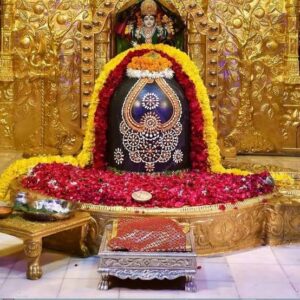 ಪ್ರತಿವರ್ಷ ಮಾಘ ಮಾಸದ ಕೃಷ್ಣ ಪಕ್ಷದ ಚತುರ್ದಶಿಯಂದು ಆಚರಿಸಲ್ಪಡುವ ಹಬ್ಬವೇ ಮಹಾಶಿವರಾತ್ರಿ. ದಕ್ಷನ ಸಹಸ್ರಕುಂಡಯಾಗದಲ್ಲಿ ಪಾಲ್ಗೊಳ್ಳಲು ಸಂಭ್ರಮದಿಂದ ತಂದೆಯ ಮನೆಗೆ ತೆರಳಿದ ದಾಕ್ಷಾಯಿಣಿ ಪತಿಪರಮೇಶ್ವರನ ಬಗೆಗಿನ ನಿಂದನೆಯ ಮಾತುಗಳನ್ನು ಕೇಳಲಾಗದೇ ದಕ್ಷನ ಅಹಂಕಾರದಿಂದ ಬೇಸತ್ತು ಯೋಗಾಗ್ನಿಯಿಂದ ತನ್ನ ಪ್ರಾಣವನ್ನು ಕಳೆದುಕೊಳ್ಳುತ್ತಾಳೆ. ಸಿಟ್ಟಿಗೆದ್ದ ಶಿವ ತಾಂಡವ ನೃತ್ಯವನ್ನು ಮಾಡುವಾಗ ಉದ್ಭವವಾದ ವೀರಭದ್ರನಿಂದ ದಕ್ಷನ ಅಂತ್ಯವಾಗುತ್ತದೆ. ಇತ್ತ ತಾರಕಾಸುರನಿಗೆ ಪರಮೇಶ್ವರನ ಪುತ್ರನಿಂದಲೇ ಮರಣವೆಂದು ವರದಾನವಿರುವುದರಿಂದ ಆದಿಶಕ್ತಿಯು ಪರ್ವತರಾಜ ಹಿಮವಾನ್ ಮತ್ತು ಮೈನಾವತಿಯ ಪುತ್ರಿ ಪಾರ್ವತಿಯಾಗಿ ಜನ್ಮ ತಾಳುತ್ತಾಳೆ. ಶಿವನನ್ನು ಒಲಿಸಿಕೊಳ್ಳುವ ಸಲುವಾಗಿ ಕಠೋರತಪಸ್ಸನ್ನಾಚರಿಸಿದ ಪಾರ್ವತಿ ಕೊನೆಗೆ ಶಿವನನ್ನು ಒಲಿಸಿಕೊಳ್ಳಲು ಸಫಲವಾಗುತ್ತಾಳೆ. ಶಿವಪಾರ್ವತಿಯರ ವಿವಾಹವು ಇದೇ ದಿನ ಆಯಿತೆಂದು ಪುರಾಣದಿಂದ ತಿಳಿದುಬರುತ್ತದೆ.
ಪ್ರತಿವರ್ಷ ಮಾಘ ಮಾಸದ ಕೃಷ್ಣ ಪಕ್ಷದ ಚತುರ್ದಶಿಯಂದು ಆಚರಿಸಲ್ಪಡುವ ಹಬ್ಬವೇ ಮಹಾಶಿವರಾತ್ರಿ. ದಕ್ಷನ ಸಹಸ್ರಕುಂಡಯಾಗದಲ್ಲಿ ಪಾಲ್ಗೊಳ್ಳಲು ಸಂಭ್ರಮದಿಂದ ತಂದೆಯ ಮನೆಗೆ ತೆರಳಿದ ದಾಕ್ಷಾಯಿಣಿ ಪತಿಪರಮೇಶ್ವರನ ಬಗೆಗಿನ ನಿಂದನೆಯ ಮಾತುಗಳನ್ನು ಕೇಳಲಾಗದೇ ದಕ್ಷನ ಅಹಂಕಾರದಿಂದ ಬೇಸತ್ತು ಯೋಗಾಗ್ನಿಯಿಂದ ತನ್ನ ಪ್ರಾಣವನ್ನು ಕಳೆದುಕೊಳ್ಳುತ್ತಾಳೆ. ಸಿಟ್ಟಿಗೆದ್ದ ಶಿವ ತಾಂಡವ ನೃತ್ಯವನ್ನು ಮಾಡುವಾಗ ಉದ್ಭವವಾದ ವೀರಭದ್ರನಿಂದ ದಕ್ಷನ ಅಂತ್ಯವಾಗುತ್ತದೆ. ಇತ್ತ ತಾರಕಾಸುರನಿಗೆ ಪರಮೇಶ್ವರನ ಪುತ್ರನಿಂದಲೇ ಮರಣವೆಂದು ವರದಾನವಿರುವುದರಿಂದ ಆದಿಶಕ್ತಿಯು ಪರ್ವತರಾಜ ಹಿಮವಾನ್ ಮತ್ತು ಮೈನಾವತಿಯ ಪುತ್ರಿ ಪಾರ್ವತಿಯಾಗಿ ಜನ್ಮ ತಾಳುತ್ತಾಳೆ. ಶಿವನನ್ನು ಒಲಿಸಿಕೊಳ್ಳುವ ಸಲುವಾಗಿ ಕಠೋರತಪಸ್ಸನ್ನಾಚರಿಸಿದ ಪಾರ್ವತಿ ಕೊನೆಗೆ ಶಿವನನ್ನು ಒಲಿಸಿಕೊಳ್ಳಲು ಸಫಲವಾಗುತ್ತಾಳೆ. ಶಿವಪಾರ್ವತಿಯರ ವಿವಾಹವು ಇದೇ ದಿನ ಆಯಿತೆಂದು ಪುರಾಣದಿಂದ ತಿಳಿದುಬರುತ್ತದೆ.
ಒಂದು ಸಲ ವಿಷ್ಣು ಮತ್ತು ಬ್ರಹ್ಮರ ನಡುವೆ ಯಾರು ಉತ್ತಮರೆಂಬ ವಿಷಯದಲ್ಲಿ ಯುದ್ಧ ಪ್ರಾರಂಭವಾಯಿತಂತೆ. ಆಗ ಅವರಿಬ್ಬರ ನಡುವೆ ಶಿವನು ಲಿಂಗರೂಪದಲ್ಲಿ ಅವತರಿಸುತ್ತಾನೆ. ಲಿಂಗದ ಆದ್ಯಂತಗಳನ್ನು ಯಾರು ಮೊದಲು ತಿಳಿಯುತ್ತಾರೋ ಅವರು ಉತ್ತಮರೆಂಬ ಅಶರೀರವಾಣಿ ಲಿಂಗದಿಂದ ಕೇಳಿಬರುತ್ತದೆ. ಮುಂದೆ ಬ್ರಹ್ಮ ಲಿಂಗದ ಕೊನೆಯಿಂದ ಬೀಳುತ್ತಿರುವ ಕೇತಕಿಯ ಹೂವನ್ನು ಹಿಡಿದು ನಾನು ಅಂತ್ಯವನ್ನು ಮೊದಲು ನೋಡಿದೆ ಎಂದು ಸುಳ್ಳು ಹೇಳುವ ಮೂಲಕ ಪೂಜಾಹೀನನಾಗುವ ಶಾಪಕ್ಕೆಡೆಯಾಗುವ ಕಥೆ ನಮಗೆಲ್ಲಾ ತಿಳಿದಿದೆ. ಹೀಗೆ ಮಹಾಶಿವರಾತ್ರಿಯ ಇದೇ ದಿನ ಲಿಂಗೋದ್ಭವವಾಯಿತೆಂಬ ಕಥೆಯೂ ಇದೆ.
ಮಹಾಶಿವರಾತ್ರಿಯಂದು ಪಾರ್ವತಿಪರಮೇಶ್ವರರು ಪ್ರತ್ಯಕ್ಷವಾಗಿ ಬಂದು ನಮ್ಮೆಲ್ಲರ ಪೂಜೆಯನ್ನು ಸ್ವೀಕರಿಸುತ್ತಾರೆಂಬ ನಂಬಿಕೆಯಿದೆ. ಇಂತಹ ಶಿವಶಕ್ತಿಯರ ಆಗಮನದ ಶುಭಸಂದರ್ಭದಲ್ಲಿ ಪ್ರಾಕೃತಿಕ ಶಕ್ತಿಯ ಉತ್ತುಂಗತೆಯನ್ನು ಅನುಭವಿಸಬಹುದಾಗಿದೆ. ಚಳಿಗಾಲ ಕಳೆದು ಬೇಸಿಗೆಯ ಆರಂಭದ ಅನುಭವವೂ ಆಗುತ್ತದೆ.
ಮಹಾಶಿವರಾತ್ರಿಯ ದಿನ ಉಪವಾಸ ಜಾಗರಣೆಗೆ ಅತಿ ಮಹತ್ತ್ವವಿದೆ. ಉಪವಾಸವೆಂದರೆ ಕೆಲವರು ಆಹಾರವನ್ನು ಸೇವಿಸದೇ ಇರುವುದು ಎಂದು ಹೇಳುತ್ತಾರೆ. ಆದರೆ ಉಪ ಎಂದರೆ ಸಮೀಪ, ವಾಸ ಎಂದರೆ ಇರುವುದು. ಉಪವಾಸವೆಂದರೆ ದೇವರ ಹತ್ತಿರವೇ ಇರುವುದು ಎಂದರ್ಥ. ಹಾಗಾಗಿ ಮಿತವಾದ ಪವಿತ್ರವಾದ ಲಘು ಆಹಾರವನ್ನು ಸೇವಿಸಿ ಶಿವನಾಮಸ್ಮರಣೆಯನ್ನು ಮಾಡುತ್ತ ರಾತ್ರಿಯಿಡೀ ಜಾಗೃತವಾಗಿರುವುದೇ ಶಿವರಾತ್ರಿಯ ವ್ರತ.
ನಮ್ಮೂರಕಡೆ ನಾವೆಲ್ಲ ಊರವರೆಲ್ಲ ನದೀಸ್ನಾನ ಮಾಡಿ ಚಿಲಗಿ ಹೂವಿನಿಂದ ನದಿಯ ಸಮೀಪದ ಬಂಡೆಗಳಲ್ಲಿ ಮೂಡಿದ ಶಿವಲಿಂಗವನ್ನು ಅರ್ಚಿಸಿ ಬೆಲ್ಲದ ಪಾನಕ ಅವಲಕ್ಕಿಯನ್ನು ಸೇವಿಸಿ ಮನೆಗೆ ಬಂದು ಮತ್ತೆ ದೇವರ ಪೂಜೆಯಲ್ಲಿ ತೊಡಗಿಸಿಕೊಳ್ಳುತ್ತೇವೆ. ಕೆಲಸದ ನಿಮಿತ್ತ ದೂರದ ದೆಹಲಿಯಲ್ಲಿರುವ ನಾವು ಊರಿನ ಶಿವರಾತ್ರಿಯ ಸವಿನೆನಪಿನೊಂದಿಗೆ ಈ ವರ್ಷ ಮಾರ್ಚ್ 1 ರಂದು ಪ್ಲವ ಸಂವತ್ಸರದ ಮಹಾಶಿವರಾತ್ರಿಯನ್ನು ಆಚರಿಸೋಣ. ಎಲ್ಲರಿಗೂ ಆ ಪರಶಿವನು ಮಂಗಲವನ್ನುಂಟುಮಾಡಲಿ.
ಗಣೇಶ ಹೆಗಡೆ, ಅಮಚೀಮನೆ
ನಮ್ಮಲ್ಲಿ “ಸಂಭ್ರಮ”, “ಸಡಗರ” ಎಂದರೆ?…
 ಏಕಮೇವ, ಕೃಷಿ ಅವಲಂಬಿಸಿದ, ಬ್ರಾಹ್ಮಣ ಜನಾಂಗ ಎಂದರೆ- ಹವ್ಯಕರು, ಸರಿಯಾ? ಹಾಗಾಗಿ, ಇತರೆ ಬ್ರಾಹ್ಮಣರಿಗೆ ಹೋಲಿಸಿದರೆ, ನಮ್ಮ ದಿನ ನಿತ್ಯದ ರೀತಿ ರಿವಾಜು ಸ್ವಲ್ಪ ಬೇರೆ. ಉದಾಹರಣೆಗೆ, ನಾವು ಬೆಳಗ್ಗೆ ಎದ್ದು ಮುಖ ತೊಳೆದು ಸೀದಾ ಬಿಸಿ ತೆಳ್ಳೇವು ತಿನ್ನಲು ತಯಾರು! ಸ್ನಾನಕ್ಕೆ ಅಥವಾ ಪೂಜೆಗೆ ಮಧ್ಯಾಹ್ನವೇ ಪುರುಸೊತ್ತು. ಆದರೆ, ಬೇರೆಲ್ಲಾ ಬ್ರಾಹ್ಮಣರು, ಹೆಚ್ಚಾಗಿ ಬೆಳೆಗ್ಗೆ ಸ್ನಾನ ಮುಗಿಸಿ ತಿಂಡಿ ತಿಂದು ಆಫೀಸ್ ಯಾ ಕೆಲಸಕ್ಕೆ ಹೋಗುವದು ಸಾಮಾನ್ಯ. ಈ ಪದ್ಧತಿ ಯಾಕೆ ನಮ್ಮಲ್ಲಿ ಬಂತು ಅಂದರೆ, ಬೆಳ್ಳಗ್ಗಿನ ತೋಟ ಗದ್ದೆ ಕೆಲಸ ಮೊದಲು ಮುಗಿಸಿ, ಮನೆಗೆ ಬಂದು ಸ್ನಾನ ಮಾಡಿ, ದೇವರ ಪೂಜೆ ಮಾಡಿ ಊಟ ಮಾಡುವದು ಪದ್ಧತಿ. ಬೆಳಗ್ಗೆ ಸ್ನಾನ ಯಾ ಪೂಜೆಗೆ ನಿಂತರೆ, ಬೆಳಗಿನ ಕೆಲಸ ಹಾಳು, ಮತ್ತೆ ತೋಟಕ್ಕೆ ಹೋಗಿ ಕೆಲಸ ಮಾಡಿ ಬರುವದರಿಂದ ಮೈ ಎಲ್ಲಾ ಗಲೀಜು! ಪುನಃ ಸ್ನಾನಮಾಡುವ ಅಭ್ಯಾಸ ಕಡಿಮೆ. ಇದು ನಮ್ಮದೇ ಆದ ಒಂದು ರೀತಿಯ “ಟೈಮ್ ಮ್ಯಾನೇಜ್ಮೆಂಟ್” (Time Management)!
ಏಕಮೇವ, ಕೃಷಿ ಅವಲಂಬಿಸಿದ, ಬ್ರಾಹ್ಮಣ ಜನಾಂಗ ಎಂದರೆ- ಹವ್ಯಕರು, ಸರಿಯಾ? ಹಾಗಾಗಿ, ಇತರೆ ಬ್ರಾಹ್ಮಣರಿಗೆ ಹೋಲಿಸಿದರೆ, ನಮ್ಮ ದಿನ ನಿತ್ಯದ ರೀತಿ ರಿವಾಜು ಸ್ವಲ್ಪ ಬೇರೆ. ಉದಾಹರಣೆಗೆ, ನಾವು ಬೆಳಗ್ಗೆ ಎದ್ದು ಮುಖ ತೊಳೆದು ಸೀದಾ ಬಿಸಿ ತೆಳ್ಳೇವು ತಿನ್ನಲು ತಯಾರು! ಸ್ನಾನಕ್ಕೆ ಅಥವಾ ಪೂಜೆಗೆ ಮಧ್ಯಾಹ್ನವೇ ಪುರುಸೊತ್ತು. ಆದರೆ, ಬೇರೆಲ್ಲಾ ಬ್ರಾಹ್ಮಣರು, ಹೆಚ್ಚಾಗಿ ಬೆಳೆಗ್ಗೆ ಸ್ನಾನ ಮುಗಿಸಿ ತಿಂಡಿ ತಿಂದು ಆಫೀಸ್ ಯಾ ಕೆಲಸಕ್ಕೆ ಹೋಗುವದು ಸಾಮಾನ್ಯ. ಈ ಪದ್ಧತಿ ಯಾಕೆ ನಮ್ಮಲ್ಲಿ ಬಂತು ಅಂದರೆ, ಬೆಳ್ಳಗ್ಗಿನ ತೋಟ ಗದ್ದೆ ಕೆಲಸ ಮೊದಲು ಮುಗಿಸಿ, ಮನೆಗೆ ಬಂದು ಸ್ನಾನ ಮಾಡಿ, ದೇವರ ಪೂಜೆ ಮಾಡಿ ಊಟ ಮಾಡುವದು ಪದ್ಧತಿ. ಬೆಳಗ್ಗೆ ಸ್ನಾನ ಯಾ ಪೂಜೆಗೆ ನಿಂತರೆ, ಬೆಳಗಿನ ಕೆಲಸ ಹಾಳು, ಮತ್ತೆ ತೋಟಕ್ಕೆ ಹೋಗಿ ಕೆಲಸ ಮಾಡಿ ಬರುವದರಿಂದ ಮೈ ಎಲ್ಲಾ ಗಲೀಜು! ಪುನಃ ಸ್ನಾನಮಾಡುವ ಅಭ್ಯಾಸ ಕಡಿಮೆ. ಇದು ನಮ್ಮದೇ ಆದ ಒಂದು ರೀತಿಯ “ಟೈಮ್ ಮ್ಯಾನೇಜ್ಮೆಂಟ್” (Time Management)!
ಒಟ್ಟಾರೆ ನನ್ನ ಅಭಿಪ್ರಾಯ, ಮೂಲತಃ ಹವ್ಯಕರು ಬೇರೆ ರೀತಿಯ ಬ್ರಾಹ್ಮಣರು, ಅವರನ್ನು ಬೇರೆ ಭಾಗದ ಬ್ರಾಹ್ಮಣರ ಅಥವಾ ಜನಾಂಗದ ಜೊತೆ ತುಲನೆ ಮಾಡಬಾರದು. ಆದರೆ, ಒಂದು ವಿಷಯದಲ್ಲಿ ನನ್ನ ಕುತೂಹಲಕ್ಕೆ ಸಮಾಧಾನಕರ ಉತ್ತರ ಸಿಗುತ್ತಿಲ್ಲ – ನಮ್ಮವರ “ಸಂಭ್ರಮ” ಅಥವಾ “ಸಡಗರ”!
ಮೂಲತಃ ಕೃಷಿ ಅಥವಾ ವೈದಿಕ ಕ್ಷೇತ್ರವನ್ನು ಅವಲಂಬಿಸಿ ಬೆಳೆದ ನಮಗೆ, ನಾವು ಆನಂದಿಸುವ ಅಥವಾ ಸಂಭ್ರಮಿಸುವ ರೀತಿಯೂ ಬೇರೆ ರೀತಿ! ಉದಾಹರಣೆಗೆ, ಉತ್ತರ ಭಾರತದಲ್ಲಿ ಮನೆಯಲ್ಲಿ ಮದುವೆ ಎಂದರೆ, ದೊಡ್ಡ ದೊಡ್ಡ ಶಾಮಿಯಾನ, ಭಾರಾತ್, ನೂರಾರು ರೀತಿಯ ಊಟ ತಿಂಡಿ, ಕುದುರೆ ಮೇಲೆ ಹುಡುಗನ ಆಗಮನ, ಇತ್ಯಾದಿ ಇತ್ಯಾದಿ. ಅವರು ಮಾಡುವ ಖರ್ಚು ಲಕ್ಷದಿಂದ ಕೋಟಿಯವರೆಗೆ. ಹುಡುಗನಿಗೆ ಮನೆ ಮಾಡಲು ಸಹಕಾರ, ಮತ್ತೆ ಹುಡುಗಿಗೆ ಲೆಕ್ಕವಿಲ್ಲದ್ದಷ್ಟು ಸೀರೆ, ಬಂಗಾರ. ನಮ್ಮಲ್ಲಿ ಮದುವೆ ಎಂದರೆ, ಶಾಸ್ತ್ರೋಕ್ತವಾಗಿ ಮದುವೆ, ಅದರ ನಂತರ ಊರವರೇ ಸೇರಿ ಮಾಡಿದ ಒಂದು ಊಟ. (ನಾನು, ಈಗಿನ ದಿನದ ಮದುವೆ ಬಗ್ಗೆ ಹೋಲಿಸುತ್ತಿಲ್ಲ). ವರದಕ್ಷಿಣೆ ಪದ್ದತಿಯೇ ಇಲ್ಲ. ಹುಡುಗಿಯ ಅಪ್ಪನ ಹತ್ತಿರ ಅಲ್ಪ ಸ್ವಲ್ಪ ದುಡ್ಡಿದ್ದರೆ, ಸಣ್ಣ ಪುಟ್ಟ ಸರವೋ ಅಥವಾ ಬಳೆ! ನಮ್ಮಲ್ಲಿ, ಹೆಚ್ಚು ಅಂದರೆ, ಹುಡುಗಿಗೆ ೨ ಅಥವಾ ೩ ಸಾಧಾರಣ ದೊಡ್ಡ ಸೀರೆ. ಮನೆಯವರೂ ಮದುವೆಗೋಸ್ಕರ ಜಾಸ್ತಿ ಖರ್ಚು ಮಾಡಿ ಬಟ್ಟೆ ಬಂಗಾರ ಖರೀದಿಯ ಪದ್ಧತಿ ಇಲ್ಲ. ಅಂದರೆ, ನಮ್ಮಲ್ಲಿ ಕೊಟ್ಟು ತೆಗೆದುಕೊಳ್ಳುವ ಪದ್ಧತಿ ಕಡಿಮೆ. ಮದುವೆಗೆ ಬಂದ ಜನರೂಕೊಡ ಸಣ್ಣ ಪುಟ್ಟ ಉಡುಗೊರೆ ಹಾಕಿ ವಧು ವರರನ್ನು ಆಶೀರ್ವದಿಸಿ ಹೋಗುವ ಪದ್ಧತಿ.
ಉತ್ತರ ಭಾರತಕ್ಕೇಕೆ, ಇಲ್ಲೇ ಮೈಸೂರು, ಬೆಂಗಳೂರು, ಧಾರವಾಡ,ಕ್ಕೆ ಹೋಗಿ ನೋಡಿ. ಮದುವೆ ಎಂದರೆ ಇಡೀ ಕುಟುಂಬ ತಿಂಗಾಳುನುಗೆಟ್ಟಲೆ ತಯಾರಿ ನಡೆಸಿ, ಹುಡುಗ ಮತ್ತು ಹುಡುಗಿಯ ಅಪ್ಪ-ಅಮ್ಮ ಇಬ್ಬರೂ ಸೇರಿ ಕರೆದು, ಬೆಳ್ಳಿ ಬಂಗಾರ ಮತ್ತು ಸಾಕಷ್ಟು ಬಟ್ಟೆ ಖರೀದಿಸಿ, ವರ ಪೂಜೆ ಮತ್ತು ಅದ್ಧೂರಿಯ ಮದುವೆಯ ಕಾರ್ಯಕ್ರಮ. ಒಟ್ಟಿನಲ್ಲಿ, ಒಂದು ಹುಡುಗ ಅಥವಾ ಹುಡುಗಿಯ ಮದುವೆ ಅಂದರೆ, ಇಡೀ ಕುಟುಂಬದ ಎಲ್ಲಾ ಸದಸ್ಯರ ಒಳ್ಳಗೊಳ್ಳುವಿಕೆ ಮತ್ತು ಸಂಭ್ರಮ.
ಮದುವೆ ಮುಂಜಿ ಬಿಡಿ, ಹಬ್ಬಗಳನ್ನು ನೋಡಿ. ಗೌರಿ ತದಿಗೆ, ಶ್ರಾವಣ ಶುಕ್ರವಾರ, ದೀಪಾವಳಿ, ನವರಾತ್ರಿ, ಅಥವಾ ಚೌತಿ ಹಬ್ಬ… ಎಲ್ಲದೂ ನಮ್ಮಲ್ಲಿ ಬಹಳ ಸರಳ. ಶಾಸ್ತ್ರೋಕ ಪೂಜೆ, ಅದರ ನಂತರ ಒಳ್ಳೆಯ ಊಟ. ಪೂಜೆಗೆ ಅದೇ ಮಡಿ ಮತ್ತೆ ಹೆಂಗಸರು ಅದೇ ದಿನ ನಿತ್ಯದ ಸೀರೆಯಲ್ಲಿ. ಬೆಂಗಳೂರು, ಮೈಸೂರುನಲ್ಲಿ ಇದೇ ಹಬ್ಬದ ಆಚರಣೆಯನ್ನು ನೋಡಿದರೆ ನಿಮಗೆ ವ್ಯತ್ಯಾಸ ತಿಳಿಯುತ್ತೆ. ಹೊಸ ಸೀರೆ ಅಥವಾ ಬಟ್ಟೆ ಬೇಕೇ ಬೇಕು. ಯಾರಾದರೂ ಮನೆಗೆ ಹಬ್ಬಕ್ಕೆ ಬರುತ್ತಾರೆ ಎಂದರೆ ಮನೆಯವರೂ ಸಹ ಹೊಸ ಬಟ್ಟೆಯಲ್ಲಿ ತಯಾರು. ಬಹಳ ಸಾದಾ ಕಾರ್ಯಕ್ರಮ ಅರಿಶಿನ-ಕುಂಕುಮ ಇರಲಿ, ಹೆಂಗಸರು ಒಳ್ಳೆಯ ರೇಷ್ಮೆ ಸೀರೆ ಉಟ್ಟು ಚಂದವಾಗಿ ತಯಾರು. ಆದರೆ ನಮ್ಮಲ್ಲಿ, ಯಾವ ಡ್ರೆಸ್ಸೂ ಸರಿ. ದೀಪಾವಳಿಯಲ್ಲಿ ಬೆಳಗ್ಗೆ ಎಣ್ಣೆ ಆರತಿಗೂ ಹಳೆಯ ಬಟ್ಟೆಯೇ ನಡೆಯುತ್ತೆ. ಮದುವೆ ಮುಂಜಿಯಲ್ಲೂ ರೇಷ್ಮೆ ಸೀರೆ ಇದ್ದರೆ ಆಯ್ತು, ಇಲ್ಲಾ ಯಾವದಾದರೂ ಸೀರೆಯೋ ಅಥವಾ ಪರಕಾಳಿ, ಮುಂಡು ನಡೆದು ಹೋಗತ್ತೆ!
ನಮ್ಮಲ್ಲಿಯ ಮದುವೆ ಅಥವಾ ಹಬ್ಬಗಳನ್ನು ಗಮನಿಸಿದಾಗ, ನಮ್ಮವರ “ಸಂಭ್ರಮ” ಅಥವಾ “ಸಡಗರ”ದ ಅರ್ಥಕ್ಕೆ ಹೊಸ ಶಬ್ದಕೋಶವವನ್ನು ಹುಡುಕಬೇಕೋ ಅಂತ ಅನುಮಾನ ಬರುತ್ತದೆ. ನಾವು ನಮ್ಮ ಸಂತೋಷವನ್ನು ಹೇಗೆ ಬೇರೆಯವರ ಜೊತೆ ಹಂಚಿಕೊಳ್ಳುತ್ತೇವೆ, ಯಾವ ಕಾರ್ಯ ಅಥವಾ ಘಟನೆ ನಮಗೆ ತುಂಬಾ ಸಂತೋಷ ನೀಡುತ್ತದೆ? ಈ ನಿಯಮಿತ “ಸರಳತೆ”ಗೆ ನಮ್ಮ ಆರ್ಥಿಕ ಪರಿಸ್ಥಿತಿ ಕಾರಣವೇ? ಅಥವಾ, ನಮ್ಮ ಊರಿನ ನಕ್ಷೆಯಿಂದ (ದೂರ ದೂರ ಮನೆಗಳು, ಸಣ್ಣ ಸಣ್ಣ ಊರು, ಇತ್ಯಾದಿ) ನಾವು ಈ ರೀತಿಯ ಸರಳ ಜೀವನ ಶೈಲಿಯನ್ನು ಅಳವಡಿಸಿದ್ದೇವೆಯೋ? ಅಥವಾ ಈ ನಡೆದು ಬಂದ ನಮ್ಮ ಈ ಪದ್ಧತಿ ಏನೂ ಹೆಚ್ಚಿನ ಖರ್ಚು ಯಾ ಕೆಲಸವಿಲ್ಲದಿದ್ದರಿಂದ, ಸರಿಯೇನೋ? ಅಥವಾ, ನಮ್ಮ ಈ ರೀತಿಯ ಆಚರಣೆಗೆ ಇನ್ನೇನಾದರೂ ಕಾರಣವಿರಬಹುದೇ? ಅಥವಾ ನಾವು ಮೂಲತಃ “ಅಲ್ಪ ತೃಪ್ತರೆ”?
ಕ್ಷಮಿಸಿ, ತುಂಬಾ ಬರೆದೆ. ಇರಲಿ, ನನ್ನ ಮೂಲ ಉದ್ದೇಶವೆಂದರೆ, ನನ್ನ ಮೇಲಿನ ಪ್ರಶ್ನೆಗೆ ಸರಿಯಾದ ಉತ್ತರ ಕಂಡುಕೊಳ್ಳುವದು. ಇದರಿಂದ, ನಮ್ಮ ಮುಂದಿನ ಪೀಳಿಗೆಗೆ ನಾವು ಸರಿಯಾದ ಹಾಗು ಸಮಂಜಸ ಉತ್ತರ ನೀಡಲು ಸಹಕಾರವಾಗಬಹುದು.
ಡಾ. ಶ್ರೀಪಾದ ಭಟ್ಟ
ಗುರುಗ್ರಾಮ, ಹರಿಯಾಣ.
(ಲೇಖಕರ ಹಕ್ಕುತ್ಯಾಗ: ನಾನು ಈ ಲೇಖನದ ಮೂಲಕ ಹೇಳಬಯಸುವ ಸಂಗತಿಗಳು, ಕೇವಲ ನನ್ನ ಅನುಭವದಿಂದ ತಿಳಿದ ವಿಷಯಗಳು. ನನ್ನ ಓದಿನ ಯಾ ಕೆಲಸದ ವರ್ಷಗಳಲ್ಲಿ, ಬಹಳ ಊರು ಹಾಗು ದೇಶವನ್ನು ಸುತ್ತಿದ್ದೇನೆ ಹಾಗು ಬೇರೆ ಬೇರೆ ಜನಾಂಗಗಳು ಜೀವಿಸುವ ರೀತಿಯನ್ನು ಕಣ್ಣಾರೆ ನೋಡಿದ್ದೇನೆ. ನಾನೂ ಕೂಡ ಹವ್ಯಕನಾಗಿರುವದರಿಂದ, ನಮ್ಮ ಜನರ ಜೀವನ ಹೊರಗಿನವರಿಗಿಂತಲೂ ಚೆನ್ನಾಗಿ ಅರ್ಥವಾಗುತ್ತದೆ. ನನ್ನ ಮೂಲ ಉದ್ದೇಶ, ನಮ್ಮವರ ಜೀವನವನ್ನು ಇನ್ನೂ ಆಳವಾಗಿ ಅಭ್ಯಸಿಸುವದು. ಕ್ಷಮಿಸಿ, ಈ ಲೇಖನ ಯಾರನ್ನೂ ಕೀಳಾಗಿ ನೋಡುವದಕ್ಕಾಗಲಿ ಅಥವಾ ಇನ್ನೊಬ್ಬರನ್ನು ಮೇಲಕ್ಕೆ ಏರಿಸುವದಕ್ಕಾಗಲಿ ಬರೆದಿಲ್ಲ. ಇದು ಬರೆದದ್ದು, ಕೇವಲ ನನ್ನ ಬಹಳ ದಿನದ ಕುತೊಹಲವನ್ನು ನೀಗಿಸಲು. ನಮಸ್ಕಾರ.)
Humans are social beings. Wherever they are, they long for the company of people to whom they can relate to. For more than four decades now, Gokarna Mandala has been bringing together Havyakas from in and around Delhi and making them live the life similar to the one in their native land. Over the years the GKM family has spread far and wide. Members, though scattered all over the world, keep in touch with each other. While organizing the function to celebrate the 40th year of Gokarna Mandala, we felt the need for a steady, stronger and easy way to communicate with the members and well-wishers of the Mandala. Hence, we are launching the website of Gokarna Mandala. We wish to actively involve everyone in the activities of the Mandala through the website. Along with the website, we are also bringing out the digital version of the Gokarnavani with the intention of providing a platform for the members to share their thoughts and experiences.
As part of our philanthropic activities, we have set up a scholarship scheme in the name of Shri K. R. Nagaraj and Late Shri I. P. Bhat. The scholarship is given to the deserving havyaka students every year to help them continue their education. We urge the members and well-wishers to generously contribute for our scholarship programme.
I invite each one of you to actively participate in all our programmes. Come, let us together strengthen the Havyaka Bond!
Shalini Prashant
President
************************
ಹವ್ಯಕ ಸಮಾಜವು ಯಕ್ಷಗಾನ, ತಾಳಮದ್ದಲೆ, ಭರತನಾಟ್ಯ, ಮದುವೆ, ಮುಂಜಿ ಇನ್ನಿತರೆ ಹಾಡುಗಳು, ಆಹಾರಪದ್ಧತಿ, ಜೀವನಶೈಲಿ, ಅಡಿಕೆ ಬೇಸಾಯ ಇತ್ಯಾದಿಗಳಿಂದ ತಮ್ಮದೇ ಆದ ವಿಶಿಷ್ಟ ಛಾಪನ್ನು ಮೂಡಿಸಿಕೊಂಡು ಬಂದಿದೆ. “ಸಾಹಿತ್ಯಸಂಗೀತಕಲಾವಿಹೀನಃ ಸಾಕ್ಷಾತ್ ಪಶುಃ ಪುಚ್ಛವಿಷಾಣಹೀನಃ” ಎಂಬ ಸುಭಾಷಿತದಂತೆ ಸಾಹಿತ್ಯ, ಸಂಗೀತ, ಕಲೆಗಳನ್ನು ಉಳಿಸಿ ಬೆಳೆಸಿಕೊಂಡು ಹೋಗಲು, ಒಬ್ಬರಿಗೊಬ್ಬರು ನೆರವಾಗಲು ನಮಗೂ ಸಹ ಒಂದು ಸಂಘ ಬೇಕೆಂದು ಹಿರಿಯರೆಲ್ಲಾ ಸೇರಿ ದೆಹಲಿಯಲ್ಲಿನ ಎಲ್ಲಾ ಹವ್ಯಕರನ್ನು ಒಗ್ಗೂಡಿಸಿ ೧೯೭೯ ರಲ್ಲಿ “ಗೋಕರ್ಣಮಂಡಲ” ಎಂಬ ಸಂಘವನ್ನು ಆರಂಭಿಸಿ ಇದೀಗ ಮಂಡಳವು ೪೩ ವಸಂತಗಳನ್ನು ಯಶಸ್ವಿಯಾಗಿ ಪೂರೈಸಿದೆ. ೨೦೧೯ ರ ಮಧ್ಯಭಾಗದಲ್ಲಿ ಸಂಘದ ೪೦ ನೇ ವಾರ್ಷಿಕೋತ್ಸವವನ್ನು ಅದ್ಧೂರಿಯಾಗಿ ಆಚರಿಸಿದ ನಮಗೆ ವರ್ಷಾಂತ್ಯದಲ್ಲಿ ಬಂದ ಕೊರೊನಾ ಎಂಬ ಮಹಾಮಾರಿ ನಮ್ಮೆಲ್ಲಾ ಚಟುವಟಿಕೆಗಳಿಗೆ ಆಘಾತ ನೀಡಿತ್ತು. ಆದಾಗ್ಯೂ ಸಹ ನಮ್ಮ ವಾರ್ಷಿಕ ಪೂಜೆ ಪುನಸ್ಕಾರಗಳು, ವಿದ್ಯಾರ್ಥಿವೇತನ ಪ್ರತಿಭಾ ಪುರಸ್ಕಾರ ಇತ್ಯಾದಿ ಕೈಂಕರ್ಯಗಳನ್ನು ಅಂತರ್ಜಾಲದ ಮುಖಾಂತರ ಪೂರೈಸಿದ್ದೆವು. ಈ ಹಿಂದೆ ಶ್ರೀ ಶ್ಯಾಮ ಭಟ್, ಶ್ರೀ ಶಶಿಧರ ಭಟ್, ಶ್ರೀ ಆದಿತ್ಯನಾರಾಯಣ ಮುಂತಾದವರು ಮಂಡಳಕ್ಕಾಗಿ ವೆಬ್-ಸೈಟನ್ನು ನಿರ್ಮಿಸಿಕೊಟ್ಟಿದ್ದರೂ ಸಹ ಕಾರಣಾಂತರಗಳಿಂದ ಅದನ್ನು ನಿರ್ವಹಿಸಲಾಗಿರಲಿಲ್ಲ. ಆದರೆ ಎಲ್ಲವೂ ಅಂತರ್ಜಾಲಮಯವಾಗುತ್ತಿರುವ ಇವತ್ತಿನ ಸಂದರ್ಭದಲ್ಲಿ ನಮ್ಮ ಹಿರಿಯರಿಂದ ಆರಂಭವಾದ ಈ ಸಂಘವನ್ನು ವ್ಯವಸ್ಥಿತವಾಗಿ ಮುಂದುವರಿಸಿಕೊಂಡು ಹೋಗುವ ಮತ್ತು ಸಮಾಜದ ಆಗುಹೋಗುಗಳಿಗೆ ಸ್ಪಂದಿಸುವ ಮಹದುದ್ದೇಶದಿಂದ ಈ “ಗೋಕರ್ಣಮಂಡಲ.ಇನ್” ಎಂಬ ಅಂತರ್ಜಾಲಪುಟವನ್ನು ಆರಂಭಿಸುತ್ತಿದ್ದೇವೆ. ಶ್ರೀ ಸಂತೋಷ ಉಪಾಧ್ಯಾಯರ ಪುಟ-ವಿನ್ಯಾಸ ಮತ್ತು ತಾಂತ್ರಿಕ ನಿರ್ವಹಣೆಯು ಮಂಡಳದ ಉದ್ದೇಶಗಳಿಗೆ ಪೂರಕವಾಗಿದ್ದು, ಈ ಸಂದರ್ಭದಲ್ಲಿ ಅವರಿಗೆ ಧನ್ಯವಾದಗಳನ್ನು ಅರ್ಪಿಸುತ್ತೇನೆ. ಹಾಗೆಯೇ ಅಧ್ಯಕ್ಷರು ಮತ್ತು ಎಲ್ಲಾ ಪದಾಧಿಕಾರಿಗಳ ಕಲ್ಪನೆಯ ಕೂಸಾಗಿರುವ “ಗೋಕರ್ಣಮಂಡಲ.ಇನ್” ಈ ಹೊತ್ತಿನ ಅವಶ್ಯಕತೆಯೂ ಆಗಿದೆ. ಅಂತರ್ಜಾಲಪುಟದಲ್ಲಿರುವ “ಗೋಕರ್ಣವಾಣಿ” ಯು ದೆಹಲಿಯ ಹವ್ಯಕರ ಮುಖವಾಣಿಯಾಗುವುದರಲ್ಲಿ ಸಂದೇಹವಿಲ್ಲ. ಹಾಗೆಯೇ ನಮ್ಮ ಪ್ರಮುಖ ಕಾರ್ಯಗಳಲ್ಲೊಂದಾದ ವಿದ್ಯಾರ್ಥಿಪ್ರತಿಭಾಪುರಸ್ಕಾರವೂ ಸಹ ಈ ಅಂತರ್ಜಾಲಪುಟದ ಮೂಲಕ ಅರ್ಹ ವಿದ್ಯಾರ್ಥಿಗಳನ್ನು ಸೇರುತ್ತದೆ ಎಂಬ ವಿಶ್ವಾಸ ನಮ್ಮದು.
ಗಣೇಶ ಹೆಗಡೆ
ಕಾರ್ಯದರ್ಶಿ
ಕಂಡೆ ನಾ ಕೊರೋನಾ
ಹಿಂದೆಂದೂ ಕಾಣದ ದಿನಗಳ ನಾ ಕಂಡೆ,
ಎಂದೆಂದೂ ಬಾರದಿರಲೆಂದು ನಾ ಬೇಡಿಕೊಂಡೆ.
ಕೊರೋನಾ ಮಹಾಮಾರಿ ಎಂಬುದೊಂದ ನಾ ಕಂಡೆ,
ಮುಂದೆಂದೂ ಬಾರದಿರಲೆಂದು ನಾ ಬೇಡಿಕೊಂಡೆ.
ಬರಿದಾದ ಪಥಗಳನು ಮಸಣ ಮೌನಗಳ ನಾ ಕಂಡೆ,
ಪಥಗಳಲಿ ಸಾಲು ಸಾಲಾಗಿ ಪಥಿಕರನೂ ನಾ ಕಂಡೆ.
ದಿಕ್ಕು ದೆಸೆಗಳಿಲ್ಲದೆ ಪರಿತಪಿಸುವವರ ನಾ ಕಂಡೆ,
ಮುಂದೆಂದೂ ಬಾರದಿರಲೆಂದು ನಾ ಬೇಡಿಕೊಂಡೆ.
ಅಲೆಯ ಮೇಲೊಂದಲೆಯ ನಾ ಕಂಡೆ,
ಒಂದಕ್ಕಿoತಿನ್ನೊಂದು ಮಹಾಪೂರವನೆ ನಾ ಕಂಡೆ.
ರೋಗಿಗಳ ಆಕ್ರಂದನಗಳ ನಾ ಕಂಡೆ,
ಮುಂದೆಂದೂ ಬಾರದಿರಲೆಂದು ನಾ ಬೇಡಿಕೊಂಡೆ.
ಚಿತೆಯ ಹಿಂದೊಂದು ಚಿತೆಯ ನಾ ಕಂಡೆ,
ಚಿತಾಗಾರದ ರೋಧನವನು ನಾ ಕಂಡೆ.
ಸಂತೈಸಲಾಗದ ಅನಿವಾರ್ಯತೆಯ ನಾ ಕಂಡೆ,
ಎಂದೆಂದೂ ಬಾರದಿರಲೆಂದು ನಾ ಬೇಡಿಕೊಂಡೆ.
ಮಸಣ ಮೌನದ ನಡುವೆ ಹಕ್ಕಿಗಳಿಂಚರವ ನಾ ಕಂಡೆ,
ನೀಲ ಗಗನವ ಕಂಡೆ, ಶುಭ್ರ ವಾಹಿನಿಯನೂ ನಾ ಕಂಡೆ.
ಎಂದೆಂದೂ ಹೀಗೆಕಿರಬಾರದೆಂದು ಕೊಂಡೆ.
ಹಿಂದೆಂದೂ ಕಾಣದ ದಿನಗಳ ನಾ ಕಂಡೆ,
ನಾವೆಸಗಿದ ಪಾಪದ ಫಲವಿದೆಂದು ಕೊಂಡೆ,
ಎಲ್ಲರನೂ ಸಲಹುವ ದೇವರ ನಾ ನೆನೆದುಕೊಂಡೆ.
ಮುಂದೆಂದೂ ಬಾರದಿರಲೆಂದು ನಾ ಬೇಡಿಕೊಂಡೆ.
ಮಮತಾ ಹೆಗಡೆ

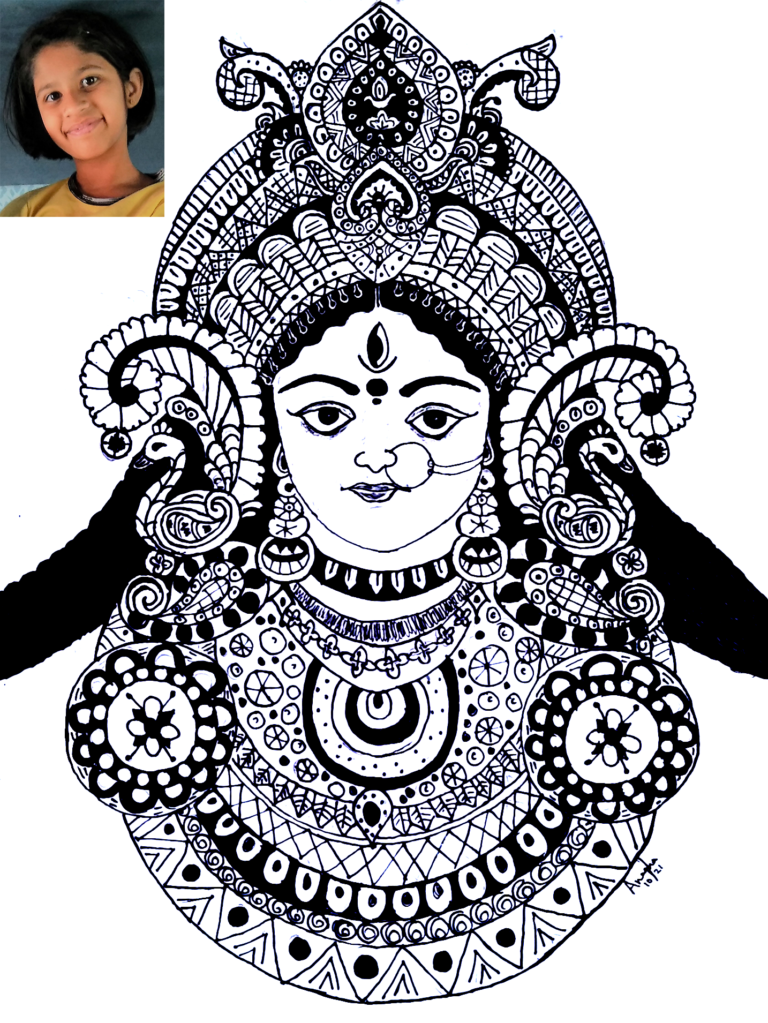
Influence of Mother Tongue
 Though it is naïve to judge a person’s work ethics from the quality of English he dispenses at his work place, it is to be accepted that those who are better at it are envied. English has become the key to success at our offices for better opportunities and promotions. Consequently, an attempt to improve our lot in English will not be a waste of time.
Though it is naïve to judge a person’s work ethics from the quality of English he dispenses at his work place, it is to be accepted that those who are better at it are envied. English has become the key to success at our offices for better opportunities and promotions. Consequently, an attempt to improve our lot in English will not be a waste of time.
Most Indian speakers of English believe their English is of superior quality when they exhibit heavy influence of mother tongue in their spoken and written English. This is why native speakers of English treat our English with contempt over accent, pronunciation, sentence construction, etc. Since English has become global now, we need to pay heed to it, though those can’t speak our native language with the command we exercise in it.
Indian speakers of English think in their mother tongue and construct sentences accordingly in English, which would often turn out to be ludicrous. The following examples will throw some weight to the above line of thought. It is left to your imagination what the sentence in mother tongue is, that influenced the speaker.
Mother Tongue Influence | |
He cut the phone. | He disconnected the phone |
He sits on my head. | He bothers me. |
God promise, I didn’t do it | I swear, I didn’t do it. |
My house came. | I have reached home. |
Don’t eat my head. | Don’t bother me. |
I climbed the bus. | I boarded the bus. |
Blood is coming. | It is bleeding. |
I had water in my eyes. | I had tears in my eyes. |
The big finger of my leg hurts. | My big toe hurts. |
On/off the fan. | Turn on/off the fan. |
Today office is there? | Is the office open today? |
The list grows endlessly. You can make your own list of such statements. Marked improvement will be noticed if we can avoid this and cast a positive influence on the listener.
(Disclaimer: Not intended to hurt anyone’s feelings.)
K. Narayana Joisa
Bangalore
ಒಳಾಂಗಣ ಸಸ್ಯ ( Indoor Plants) ಗಳ ಆರೈಕೆ
 1. ಮೊದಲನೆಯದಾಗಿ, ನಿಮ್ಮ ಸಸ್ಯಗಳಿಗೆ ಸಾಕಷ್ಟು ಬೆಳಕು ಸಿಗುತ್ತಿದೆಯೇ ಎಂದು ಪರಿಶೀಲಿಸಬೇಕು. ನಿಮ್ಮ ಮನೆಯ ಕಿಟಕಿಯಿಂದ ತುಂಬಾ ದೂರದಲ್ಲಿದ್ದರೆ ಸಸ್ಯಗಳು ಹೆಚ್ಚು ಸಮಯಗಳ ಕಾಲ ಬದುಕುವುದಿಲ್ಲ. ಸೂರ್ಯನ ಬೆಳಕು ಅಗತ್ಯವಿರುವ ಸಸ್ಯಗಳನ್ನು ದಿನಕ್ಕೆ 4-5 ಗಂಟೆಗಳ ಕಾಲ ಸೂರ್ಯನ ಬೆಳಕು ಪಡೆಯುವ ಸ್ಥಳಗಳಲ್ಲಿ ಇಡಬೇಕು.
1. ಮೊದಲನೆಯದಾಗಿ, ನಿಮ್ಮ ಸಸ್ಯಗಳಿಗೆ ಸಾಕಷ್ಟು ಬೆಳಕು ಸಿಗುತ್ತಿದೆಯೇ ಎಂದು ಪರಿಶೀಲಿಸಬೇಕು. ನಿಮ್ಮ ಮನೆಯ ಕಿಟಕಿಯಿಂದ ತುಂಬಾ ದೂರದಲ್ಲಿದ್ದರೆ ಸಸ್ಯಗಳು ಹೆಚ್ಚು ಸಮಯಗಳ ಕಾಲ ಬದುಕುವುದಿಲ್ಲ. ಸೂರ್ಯನ ಬೆಳಕು ಅಗತ್ಯವಿರುವ ಸಸ್ಯಗಳನ್ನು ದಿನಕ್ಕೆ 4-5 ಗಂಟೆಗಳ ಕಾಲ ಸೂರ್ಯನ ಬೆಳಕು ಪಡೆಯುವ ಸ್ಥಳಗಳಲ್ಲಿ ಇಡಬೇಕು.
2. ನಿಮ್ಮ ಸಸ್ಯಗಳಿಗೆ ನಿಯಮಿತವಾದ ನೀರನ್ನು ಹಾಕಬೇಕು. ನೀರಿನ ಪ್ರಮಾಣವು ಪ್ರತಿ ಸಸ್ಯಕ್ಕೆ ಬೇರೆ ಬೇರೆಯಾಗಿರುತ್ತದೆ. ಕೆಲವು ಸಸ್ಯಗಳು ತೇವಾಂಶವುಳ್ಳ ಮಣ್ಣನ್ನು ಇಷ್ಟಪಡುತ್ತವೆ. ಆದರೆ ಉದಾಹರಣೆಗೆ, ಪಾಪಾಸುಕಳ್ಳಿಯಂತಹ ಸಸ್ಯಗಳು ವಾರಕ್ಕೆ ಒಂದು ಬಾರಿ ನೀರನ್ನು ಹಾಕಿದರೆ ಸಾಕಾಗುತ್ತದೆ.
3. ಒಳಾಂಗಣ ಸಸ್ಯಗಳಲ್ಲಿ ಸ್ವಲ್ಪ ಸಮಯ ಕಳೆದ ಮೇಲೆ ಅದರ ಎಲೆಗಳ ಮೇಲೆ ಧೂಳಿನ ಪದರಗಳಿಂದ ಮುಚ್ಚಲ್ಪಡುತ್ತದೆ. ಇದರಿಂದ ಸಸ್ಯಗಳ ಬೆಳವಣಿಗೆಗೆ ಪರಿಣಾಮ ಉಂಟುಮಾಡುತ್ತದೆ. ಆದ್ದರಿಂದ ಸಸ್ಯಗಳ ಎಲೆಗಳನ್ನು ಧೂಳಿನಿಂದ ಸ್ವಚ್ಛಗೊಳಿಸುವುದು ಬಹಳ ಮುಖ್ಯವಾಗಿದೆ. ಅದಕ್ಕಾಗಿ ನೀವು ಎಲೆಗಳನ್ನು ಬಟ್ಟೆಯಿಂದ ಒರೆಸುವುದು ಅಥವಾ ಬೆಚ್ಚಗಿನ ನೀರಿಗೆ ಸ್ವಲ್ಪ ಸೋಪ್ ನ ದ್ರವವನ್ನು ಸೇರಿಸಿ, ಅದರಿಂದ ಎಲೆಗಳನ್ನು ಸ್ವಚ್ಛ ಮಾಡಬೇಕು. ಆಗ ಸಸ್ಯಗಳು ನೋಡಲು ಕೂಡ ಸೌಂದರ್ಯಕರವಾಗಿ ಕಾಣುತ್ತದೆ.
4. ರಸಗೊಬ್ಬರವನ್ನು ಹಾಕುವುದರಿಂದ ಸಸ್ಯ ಗಳಿಗೆ ಪೋಷಕಾಂಶ ಸಿಗುತ್ತದೆ. ಪ್ರತಿ ತಿಂಗಳಿಗೊಮ್ಮೆ ರಸಗೊಬ್ಬರವನ್ನು ಹಾಕುವುದರಿಂದ ಸಸ್ಯಗಳು ಹುಲುಸಾಗಿ ಬೆಳೆಯುತ್ತವೆ.
ಕಿರಣ ಭಟ್

ಹರಟೆ!!
ಒಗ್ಗರಣೆ ಮರ್ಯಾದೆ
ಈ ಶೀರ್ಷಿಕೆ ಓದಿ ಎಂತಪ್ಪಾ ಇದು ಹೇಳೆಡಿ !! ಇದು ಕೊರೋನಾದ ಒಂದನೇ ಅಲೆ ಹೆಚ್ಚು ಆಗಿಪ್ಪಗಾಣ ಸಮಯದ ಕಥೆ (before vaccination started)
ಆನು ವೃತ್ತಿಲ್ಲಿ ಆಯುರ್ವೇದ ವೈದ್ಯ, ಹಾಂಗಾಗಿ ಎಲ್ಲರೂ ‘ಲೋಕ್ಡೌನ್‘ ಲ್ಲಿ ಮನೆಲಿಪ್ಪಗ ಎಂಗೊಗೆ ಆಸ್ಪತ್ರೆ ಬಿಡ್ಳೆ ಗೊಂತಿಲ್ಲೆ…, ಸಾಲದ್ದಕ್ಕೆ ಆನು ಕೆಲಸಮಾಡುವ ಆಸ್ಪತ್ರೆ CHC (Corona Health Centre-ಕೊರೋನಾ ಓಳರೋಗಿ ಚಿಕಿತ್ಸಾ ಆಸ್ಪತ್ರೆ), ಹೊರರೋಗ ವಿಭಾಗವೂ ಕೂಡಾ ನೆಡಕ್ಕೊಂಡು ಇದ್ದತ್ತು, ಪೇಷಂಟ್ ಧಾರಾಳ, ಸಾಲದ್ದಕ್ಕೆ ಆಸ್ಪತ್ರೆಯ ಹೆಚ್ಚುವರಿ ಅಧೀಕ್ಷಕ ಜವಾಬ್ದಾರಿ, ಎಂತದೋ ಕಾರ್ಯಕ್ಕೆ ಡೆಲ್ಲಿಂದ ಹೆರಹೋಗಿ ಬರೆಕಾತು. ವಾಪಸ್ಸು ಬಂದ ಕೂಡ್ಳೆ RAT – RTPCR test ಮಾಡುಸಿದೆ, ನೆಗೆಟಿವ್ ರಿಪೋರ್ಟ್ ಬಂತು, ಹಾಂಗೆ ನಿಶ್ಚಿಂತೆ ಆತು.
ಡೆಲ್ಲಿಲ್ಲಿ ಎಂಗಳ ಐದಾರು ಮನಗೊ ಇದ್ದು, ಎರಡು ದಿನ ಕಳುದು ಒಬ್ಬ ತಮ್ಮನ ಮದುವೆಯ ಎನಿವರ್ಸರಿ, ಪಾರ್ಟಿ, ಎಲ್ಲರು ಒಟ್ಪಿಂಗೆ ಖೊಷೀಲಿ ಗಮ್ಮತು ಮಾಡಿದಿಯೊ…. ಮತ್ತೆ ನಾಕುದಿನ ಕಳುದಪ್ಪಗ…ರಜಾ ಶೀತ ಸುರು ಆತು, ಮತ್ತೆ ರಜಾ ಸಣ್ಣಕೆ ಮೈ ಬೆಶಿ … ಹೇಂಗಾರೂ Corona Test negative ಬಯಿಂದು….ಹಾಂಗೆ ಅದಲ್ಲ, ವಾತಾವರಣ ಬದಲಿ ಹೇಳಿ ಗ್ರೇಶಿದೆ…
ಇದು ಒಂದು ಶನಿವಾರ, ಮರುದಿನ ಉದಿಯಪ್ಪಗ ಕಾಫಿಗೆ ತಿಂಡಿ ಇಡ್ಲಿ, ಮೆಂತೆ ಕೊದಿಲು ಮಾಡೆಕ್ಕು ಹೇಳಿ ಮಗಳು, ನಿಂಗೊ ಚೆಂದಕೆ ಮಾಡ್ತಿ ಹೇಳಿ ಯಜಮಾಂತಿಯ ಆದೇಶ, …. ಮೂಗು ಉದ್ದೆಂಡು ಹೆರಟೆ….ಒಗ್ಗರಣೆ ಹಾಕೊಗಾ….ಅದಾ… “ಒಗ್ಗರಣೆಮರ್ಯಾದೆ” ಇಲ್ಲೆ…..!!! (ಆಆಆಕ್ಷೀಈಈಈ).
ಮತ್ತೆ ಎಂತರ…… ರಜಾ ಹೊತ್ತು ಕಂಡದೆಲ್ಲ ಮೂಸಿದ್ದೇ ಮೂಸಿದ್ದು…
ಮರುದಿನ test 
ಮತ್ತೆಂತರ…. ದಿನಾ ಮೂಸೊದೇ ಕೆಲಸ….. 
ಮೊದಾಲು ಪಾರ್ಟಿಗೆ ಬಂದವಕ್ಕೆಲ್ಲಾ ಫೋನು ಮಾಡಿ ಹೇಳಿದೆ, ಮಗಳದ್ದೂ ಹೆಂಡತಿದೂ test ಆತು, +ve… ಆನೇ ಹಂಚಿದ್ದು (
ದೇವರ, ಗುರು–ಹಿರಿಯರ ಆಶೀರ್ವಾದ…ಎಲ್ಲೋರಿಂಗೂ ಗುಣ ಆತು. ಮತ್ತೆ ಪುನ: ಮೆಂತೆ ಕೊದಿಲು ಮಾಡಿ ಒಗ್ಗರಣೆ ಮರ್ಯಾದೆ ಕೊಟ್ಟಿಕ್ಕಿ ಟೆಸ್ಟ್ ಮಾಡಿದೆ. ಆದರೆ….ಈಗಳೂ sanitizer ಲ್ಲಿ ಕೈ ಉದ್ದಿ ಮೂಗಿಂಗೆ ಹಿಡಿವದು ಬಿಟ್ಟಿದಿಲ್ಲೆ
ಹಾಂಗೊಂದು ಒಗ್ಗರಣೆ ಮರ್ಯಾದೆಯ ಸ್ವಾನುಭವದ ಕಥೆ.
ಅಂಬಗ ಸೋಂಕು ಎಲ್ಲಿಂದ ಬಂತು….?
Arogya Setu App showed two +ve patients roamed in and around me for more than 03-04 hours in Hospital 2-3 days before my symptoms….!!!
ಡಾ. ರಾಜಗೋಪಾಲ್, ದಿಲ್ಲಿ
Gratitude - a life changer
 I was happy in my life—enjoying with family and friends, busy with work, looking forward to many things. But the minute things changed drastically, I felt lost.
I was happy in my life—enjoying with family and friends, busy with work, looking forward to many things. But the minute things changed drastically, I felt lost.
Last year when the pandemic hit us, I was deeply disturbed. The world seemed out of sync and I felt like everything was out of control. I am sure many of you can relate to this feeling. I suffered for months until, driven by my family and my own exploration to find ways and means that would make me feel better, I came across a course on positive psychology. I joined the course to enhance my knowledge about myself, the world around me and life in general.
Now I’d like to share with you my learning from the course, mainly my understanding of the powerful tool called gratitude.
We often talk about gratitude, but have we ever thought what gratitude is.
Gratitude is the state of mind of being grateful and thankful, or appreciating everything we do and feel in our life. In positive psychology, gratitude is strongly and consistently associated with greater happiness. It helps people feel more positive emotions, relish good experiences, improve health and build strong relationships.
You must be wondering why is gratitude necessary in our life. Humans are defined by how empathetic we are and how we relate to others. Practicing gratitude enhances empathy and reduces aggression.
My studies and experience have taught me that the practice of gratitude leads to less anxiety, stress, depression and higher self-esteem. It has also helped me sleep better, something that was a constant struggle for me earlier. Sleeping better led to more energy and I found myself being more active every day. Thus, practicing gratitude has the potential to impact physical health as well. Another positive effect has been in terms of understanding others’ perspectives. Being grateful for what I have, feel and do have opened my eyes in more than one way. I now find myself with many different avenues to hold conversations.
When we express or receive gratitude, our brain releases dopamine and serotonin, the two crucial neurotransmitters responsible for our emotions that make us feel good. They enhance our mood and make us feel happy from inside. Therefore, gratitude reduces fear and anxiety by regulating stress hormones.
It is said that the process of expressing gratitude can result in increased fitness. This is because the positive feelings that result from the stress controlling hormones cause your body to better regulate blood pressure, better perform heart functions, feel less body pains, get stronger immune systems and make progress towards better health. Years of research has shown that when you have more positive and happy thoughts, you feel an increase in self satisfaction, experience less mood swings and develop fewer toxic emotions.
Grateful people are sensitive to others’ feelings and behave in a more prosocial manner. Practicing gratitude reduces social comparison and increases mental strength and helps to overcome mental trauma. This in turn leads to an array of social benefits, including better communication, stronger interpersonal relationships, etc. Saying “thank you” constitutes good manners and showing appreciation and can help you win new friends and new opportunities.
Yes, it can change your life because it makes you appreciate what you have and not run around looking for what you don’t have.
There are some simple ways to practice gratitude:
1. Appreciating yourself. Stand in front of a mirror and say five good things to yourself, that is, compliment yourself. Notice that you feel better. Repeat this as often as you want. You can show your gratitude to yourself by saying “oh” “wow”, “this is amazing” or “how great is this” and even saying “I am happy for this”.
2. Patting someone’s back, shaking hands, saying “namaste” and even hugging someone are ways of showing your gratitude.
3. Start writing a gratitude journal. By writing down the good things that happen every day, you begin to notice them and appreciate them. Make note of who you are grateful to and express it—like thanking people who are part of your life, the universe, God, the community you live in, etc.
4. Practice gratitude rituals at the time of meals. Simply show gratitude for the food you eat (also thanking God and the person who cooked your food). Most of the schools follow this ritual during their meal time. In some communities, people say God’s name by chanting some shlokas and say ‘om’ before having food.
Lastly, expressing gratitude is more than courtesy. It is about showing your heartfelt appreciation. You have noticed something good so you genuinely thank the creator with simple words of love and praise. It not only makes them feel good but it also makes us feel a lot better about ourselves and our lives.
Arati Hegde
Arati Hegde is a neuro-linguistic programming (NLP) practitioner and life coach, trained in positive psychology and mental health promotion. Before that, she worked in the field of education for over 25 years.
ಕೋವಿಡ್-19ನ ಕಹಿ ನೆನಪುಗಳು
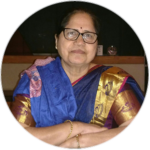 ಕೊರೊನಾ ಎಂಬ ಮಹಾಮಾರಿಗಾಗಿ ಹೇರಿದ್ದ “ಪ್ರಯಾಣ ನಿರ್ಬಂಧ” ಸ್ವಲ್ಪ ಸಡಿಲವಾಗಿತ್ತು ಹಾಗೂ ನನ್ನ ಪ್ರಯಾಣ ಕೆನಡಾದಿಂದ ಇಂಡಿಯಾಕ್ಕೆ ಅನಿವಾರ್ಯವೂ ಆಗಿತ್ತು ಆದುದರಿಂದ ಬೆಂಗಳೂರಿಗೆ ಬಂದು ಸೇರಿದೆ.
ಕೊರೊನಾ ಎಂಬ ಮಹಾಮಾರಿಗಾಗಿ ಹೇರಿದ್ದ “ಪ್ರಯಾಣ ನಿರ್ಬಂಧ” ಸ್ವಲ್ಪ ಸಡಿಲವಾಗಿತ್ತು ಹಾಗೂ ನನ್ನ ಪ್ರಯಾಣ ಕೆನಡಾದಿಂದ ಇಂಡಿಯಾಕ್ಕೆ ಅನಿವಾರ್ಯವೂ ಆಗಿತ್ತು ಆದುದರಿಂದ ಬೆಂಗಳೂರಿಗೆ ಬಂದು ಸೇರಿದೆ.
ನಾನು 15 ವರ್ಷಗಳು ಮುಖ್ಯ ಶಿಕ್ಷಕಿಯಾಗಿ ಸೇವೆ ಸಲ್ಲಿಸಿದ್ದ ಶಾಲೆಯನ್ನು ಸಂದರ್ಶಿಸಲು ಬಹಳ ಉತ್ಸಾಹದಿಂದ ಹೊರಟೆ. ಆದರೆ ಅಲ್ಲಿ ಕಂಡದ್ದೇನು? ಅರ್ಧ ವೇತನದಲ್ಲಿ ಸೇವೆ ಸಲ್ಲಿಸುತ್ತಿರುವ ಶಿಕ್ಷಕ-ಶಿಕ್ಷಕಿಯರ ಮನಸ್ಸಿನಲ್ಲಿ ಅಡಗಿದ್ದ ದು:ಖದ ಛಾಯೆ. ಎರಡುಸಾವಿರ ವಿದ್ಯಾರ್ಥಿಗಳು ಓದುತ್ತಿದ್ದ ಆ ಕಟ್ಟಡ ಬರೀ ನಾಮಫಲಕದೊಂದಿಗೆ ನಿಂತಿತ್ತು. ತುಕ್ಕು ಹಿಡಿಯುತ್ತಿರುವ ಶಾಲಾವಾಹನಗಳು, ಎಲ್ಲೆಡೆಯೂ ನೀರವ ಮೌನ. ಇದನ್ನೆಲ್ಲಾ ಕಂಡು ನನ್ನ ಕಣ್ಣುಗಳು ತೇವವಾದವು. ಈ ಶಾಲೆ ಮಾತ್ರವಲ್ಲ, ಇಡೀ ಜಹತ್ತೇ ಈ ಕ್ರೂರ ರೋಗದಿಂದ ನರಳುತ್ತಿದೆಯಲ್ಲವೆ ಎಂದು ಮನಸ್ಸನ್ನು ಸಂತೈಸಿದೆ. ಮುಂದಿನ ಜನಾಂಗದ ಭವಿಷ್ಯ ಏನು? ಎಂದಿಗೆ ಇದು ಕೊನೆ? ಆ ಭಗವಂತನೇ ಬಲ್ಲ, ಅಲ್ಲವೇ?
ಹಾಗೆಯೇ ಪ್ರಯಾಣ ಮುಂದುವರೆಯಿತು. ಎರಡನೇ ಲಾಕ್ ಡೌನ್ ಎಂಬುದು ಮನದಟ್ಟಾಯಿತು. ಪುನ:ಜನಜೀವನ ಸ್ತಬ್ಧ. ಮನೆಯ ಟೆರೆಸ್ ಮೇಲೆಯೇ ದಿನಾ ವಾಕ್ ಮಾಡುತ್ತಿದ್ದೆ. ಪಕ್ಕದ ಮನೆಯ ಒಬ್ಬ ಹುಡುಗನೂ ಅವನ ಟೆರೆಸ್ ಮೇಲೆ ಓಡಾಡುತ್ತಿದ್ದ. ಹಾಗಾಗಿ ಅವನ ಮುಖ ಪರಿಚಯವಾಗಿತ್ತು. ಮನೆ ಮೈನ್ ರೋಡ್ ಗೆ ಹತ್ತಿರವಿದ್ದುದರಿಂದ ಪ್ರತೀ ಐದು ನಿಮಿಷಕ್ಕೊಮ್ಮೆ ಆಂಬ್ಯೂಲೆನ್ಸನ ಭಯಾನಕ ಸದ್ದು ಕೋಣೆ ಒಳಗ ಬಂದು, ದೂರದಶ೬ನ ವೀಕ್ಷಿಸಿದರೆ ಬರೀ ಶವಯಾತ್ರೆ, ಶವದಹನಗಳ ಹೊಗೆ ಇದನ್ನೆಲ್ಲಾ ಕಂಡು ನಾನು ಭಯಭೀತಳಾದೆ. ನಾನು ಹಿಂತಿರುಗಿ ನನ್ನ ಊರು ಸೇರುತ್ತೇನೋ ಇಲ್ಲವೋ ಎಂಬ ಭಯ ನನ್ನನ್ನು ಕಾಡುತ್ತಿತ್ತು.
ಗಾಳಿಯಲ್ಲೂ ರೋಗ ಹರಡುತ್ತಿದೆ ಎಂಬ ವದಂತಿ ಬಂದುದರಿಂದ ಕೋಣೆಯೊಳಗೇ ಇರಲು ಪ್ರಾರಂಭಿಸಿದೆ. ನಾಲ್ಕು ದಿನಗಳ ನಂತರ ಆ ಪಕ್ಕದ ಮನೆಯಿಂದ ಅಳುವ ಕಿರಚಾಡುವ ಧ್ವನಿ ಕೇಳಿ ಬಂತು. ಅದೇನೆಂದು ವಿಚಾರಿಸಿದಾಗ ಆ 46 ವರ್ಷದ ಯುವಕ ಕೊರೊನಾಗೆ ಬಲಿಯಾಗಿದ್ದಾನೆ ಎಂದು ತಿಳಿದು ಮನಸ್ಸು ಖಿನ್ನವಾಯಿತು. ಅಬ್ಬಾ! ವಿಧಿ ಎಷ್ಟು ಕ್ರೂರ ಎಂದುಕೊಂಡೆ. ಇದಾದ ಎರಡು ದಿನಗಳ ನಂತರ ಎದುರು ಮನೆಯ ವೃಧ್ದರು ಕೊರೊನಾದಿಂದ ವಿಧಿವಶರಾದರು ಎಂಬುದು ದೂರದರ್ಶನದಿಂದ ತಿಳಿಯಿತು.ಅಷ್ಟು ಹತ್ತಿರವಿದ್ದರೂ ಯಾರಿಗೂ ತಿಳಿದಿರಲಿಲ್ಲ. ಎಂತಹ ದುರಾದೃಷ್ಟ ಅಲ್ಲವೇ! ಮೃತದೇಹವನ್ನು ಮನೆಯವರಿಗೆ ಹಸ್ತಾಂತರಿಸದೆ ಅಲ್ಲಿಂದಲೇ ಸ್ಮಶಾನಕ್ಕೆ ರವಾನಿಸಿದ್ದರಂತೆ. ಎಂತಹ ವಿಧಿಯಾಟ, ಯಾರಿಗೂ ಅರ್ಥವಾಗದ್ದು!.ನಾವು ದಿನಾ ವಾರ್ತಾ ಪತ್ರಿಕೆ, ದೂರದರ್ಶನದಲ್ಲೆಲ್ಲಾ ಸಾವಿರಾರು ಜನ ಮೃತಪಟ್ಟಿರುವುದು ಕೇಳಿರುತ್ತೇವೆ, ನೊಂದಿರುತ್ತೇವೆ. ಆದರೆ ನಮಗೆ ತಿಳಿದವರ , ಆಪ್ತರ , ಬಂಧುಗಳ ಸಾವು ತುಂಬಾ ನೋವು ಕೊಡುತ್ತದೆ. ನೆನಸಿದಾಗಲೆಲ್ಲಾ ಆ ನೋವು ಕಾಡುತ್ತಾ ಇರುತ್ತದೆ.
ಸ್ವಲ್ಪ ಮಟ್ಟಿಗೆ ಕಹಿನೆನಪುಗಳನ್ನೆಲ್ಲಾ ಮರೆತು, ಎರಡು ಲಸಿಕೆಗಳೊಂದಿಗೆ ದೆಹಲಿಗೆ ಬಂದು ಅಲ್ಲಿಯ “ಗೋಕರ್ಣ ಮಂಡಲ” ದ ಶಾರದಾ ಪೂಜೆಯ ಪ್ರಸಾದವನ್ನು ಸ್ವೀಕರಿಸಿ, ಅಕ್ಟೋಬರ್ 31 ರಂದು ಸುರಕ್ಷಿತವಾಗಿ ಕೆನಡಾ ತಲುಪಿದೆ.
ಈ ಬರಹದ ಮೂಲಕ ನಾನು ನನಗೆ ಎರಡು ತಿಂಗಳು ಆಶ್ರಯಕೊಟ್ಟ ನನ್ನ ಇಬ್ಬರು ಗೆಳತಿಯರಿಗೆ ಕೃತಜ್ಞತೆ ಯನ್ನು ಹೇಳುತ್ತೇನೆ. ಒಬ್ಬರು ನಾರೈನ ವಿಹಾರದ ಗೌರಿ, ಇನ್ನೊಬ್ಬರು ಮಾಲತಿ ರಾಜ್ ಮತ್ತು ಅವರ ಮಕ್ಕಳು ಹಾಗೂ ಮೊಮ್ಮಕ್ಕಳು. ಅವರಿಗೆ ನಾನು ಚಿರ ಋಣಿ.
ಈ ದೊಡ್ಡ ಮಹಾಮಾರಿ ಜಗತ್ತಿನಿಂದ ಬೇಗ ತೊಲಗಿ ಹೋಗಲಿ, ಜನಜೀವನ, ವ್ಯಾಪಾರ, ವಹಿವಾಟುಗಳೆಲ್ಲಾ ಮೊದಲಿನಂತಾಗಲಿ ಎಂದು ಪ್ರಾರ್ಥಿಸುತ್ತೇನೆ.
ಕಲ್ಚಾರು ಲಲಿತಾ ಗಣೇಶ್

ಮಾಸ್ಕು ಮಹಾತ್ಮೆ
ಧರಿಸಯ್ಯ, ಧರಿಸಯ್ಯ, ಧರಿಸಯ್ಯ ಮಾಸ್ಕು
ಧರಣಿಯೊಳು ಖಂಡಿಸೈ ಕೋವಿಡ್ಡು ರಿಸ್ಕು
ವ್ಯಾಕ್ಸಿನೇಶನ್ ಆದ್ರೂ ಮಾಸ್ಕು ಕಡ್ಡಾಯ
ಟ್ಯಾಕ್ಸಿಯಲಿ ಡ್ರೈವರನ ಸೋಂಕು ಬರದಯ್ಯಾ
ಸೋಪು ನೀರಲಿ ಸದಾ ಕೈಯ ತೊಳೆಯಯ್ಯಾ
ವೈರಾಣು ತೊಲಗಿಸಲು ಇದುವೇ ಉಪಾಯ …
ಧರಿಸಯ್ಯ, ಧರಿಸಯ್ಯ, ಧರಿಸಯ್ಯ ಮಾಸ್ಕು …
ಮಾಸ್ಕಿನಾ ವೈವಿಧ್ಯ ಹತ್ತು ಹಲವಾರು
ಗುಣದಲ್ಲಿ ಬೆಲೆಯಲ್ಲಿ, ಆಕಾರ ನೂರು
ಹಕ್ಕಿ ಕೊಕ್ಕಿನ ಮಾಸ್ಕು, ಪಟ್ಟಿ ಕಟ್ಟುವ ಮಾಸ್ಕು
ರಂಗು ರಂಗಿನ ಮಾಸ್ಕು, ಮಂಗ, ಮುಂಗುಸಿ ಮಾಸ್ಕು
ಧರಿಸಯ್ಯ, ಧರಿಸಯ್ಯ, ಧರಿಸಯ್ಯ ಮಾಸ್ಕು …
ವಾಚಾಳಿ ಜನಗಳಿಗೆ ಮಾಸ್ಕ್ ಒಂದು ಶಿಕ್ಷೆ
ಟೀಚರುಗಳಿಗೆ ಮಾತ್ರ ಬಹು ದೊಡ್ಡ ರಕ್ಷೆ
ಮಾಸ್ಕು ಉದ್ದಿಮೆಗಿಂದು ಭಾರೀ ಸಪೋರ್ಟು
ಹೆಚ್ಚಾಗಬಹುದಯ್ಯ ಇದರ ಎಕ್ಸ್ಪೋರ್ಟು
ಧರಿಸಯ್ಯ, ಧರಿಸಯ್ಯ, ಧರಿಸಯ್ಯ ಮಾಸ್ಕು …
ವಧು ವರರ ಜೋಡಿಸಲು ಮಾಸ್ಕು ಸಹಕಾರಿ
ವಿಧ ವಿಧದ ಮಾಸ್ಕನ್ನು ದೂರದಲಿ ತೋರಿ
ಮದುವೆಯಾದೊಡನೆಯೇ ಮಾಸ್ಕು ಕೆಳಜಾರಿ
ಹೇಳುವರು “ಮೈ ಡಿಯರ್ ಆಯ್ ಎಮ್ಮ್ ಸೋರಿ”
ಧರಿಸಯ್ಯ, ಧರಿಸಯ್ಯ, ಧರಿಸಯ್ಯ ಮಾಸ್ಕು …
ಬಹಿರಂಗ ಶುದ್ಧಿಸಲು ಮಾಸ್ಕು ಬೇಕಯ್ಯಾ
ಅಂತರಂಗದ ಶುದ್ಧಿ, ಇನ್ನೂ ಅನಿವಾರ್ಯ
ಆಹಾರ, ವಿಹಾರ, ಆಚಾರ, ವಿಚಾರ
ಮನುಕುಲದ ಒಳಿತಿಗೆ ಇದೇ ಮೂಲಾಧಾರ !!
ಧರಿಸಯ್ಯ, ಧರಿಸಯ್ಯ, ಧರಿಸಯ್ಯ ಮಾಸ್ಕು …
ಡಾ. ಬಿ ವಿ ಅಡ್ಕೊಳಿ
ಗೆದ್ದವನೇ ಬಲವಂತಾ
“ನಾನು ಬದುಕಿದ್ದೇನೆಂದು ನಿನಗೆ ಆಶ್ಚರ್ಯವೇ”
ಕೇಳಿತು, ಪ್ಲಾಸ್ಟಿಕ್ ಕೈಚೀಲವೊಂದು
ಅದಕುತ್ತರ ಬಂತು ಮರಗಳ ನಿಶ್ಶಬ್ದವೇ
ಸಂದಿಯೊಳಗಿನ ಜಡಿಗಂಟುಗಳಿಂದಲ್ಲವೇ
“ನಿಮ್ಮಿಂದ ಹರಡುತ್ತಿವೆ ಪ್ರೇಮದ ಸಂಕೇತವೇನೋ ಸರಿ”
ಪ್ಲಾಸ್ಟಿಕ್ ಕೈಚೀಲ ಬಾಯಿಬಿಟ್ಟು ಹಾಡಿತು
‘ಆದರೆ ನೀರು ಹಾಕಿ ಜೋಪಾನ ಮಾಡಿದ ಮಾಲಿಕರಿಗೆ
ಬರಿ ಎಲೆಗಳನುದುರಿಸಿ ಕಸದ ಗುಂಡಿ ಏರಿಸುತಿರುವೆ’
‘ನೋಡು ನನ್ನನು, ಹೊರುತಾ ಅವರ ಭಾರವನ್ನೆಲ್ಲ
ಅಡಿಗೆ ಸಾಮಾನು, ಕೋಳಿ ಮಾಂಸ, ಬ್ರೆಡ್ಡುಗಳನೆಲ್ಲ,
ನೀನಾದರೋ ಮೂಕಿ, ಬರೇ ಕೆಪ್ಪಾಗಿ ಕೂತಿರುವೆ,
ನೀರು ಗೊಬ್ಬರಗಳ ಭಿಕ್ಷೆ ಸದಾ ಬೇಡುತಿರುವೆ’
ತುಂಬಿದ ನಾಚಿಕೆ, ಗೊಣಗಿತು ಕುಸಿದ ಮರವೊಂದು ಕಡೆ
ಕಾಳಜಿಯಿದೆಯೇ ಯಾರಿಗಾದರೂ ನನ್ನ ಜೀವದ ಕಡೆ,
ಎದೆ ಕಡಿದು, ಕತ್ತಿಯಾಡಿಸಿ ಹೊಟ್ಟೆಯುದುರಿಸುವರು
ಮಿದು ನನ್ನೆಲೆಗಳನು, ಈ ಜನರಿಗೆ ನಾಚಿಕೆಯಿದೆಯೇ?
‘ಗತಿಯೇನು ನಿನ್ನದು, ತುಂಬಿದ ಚೀಲ ಖಾಲಿ ಮಾಡಿದ ಮೇಲೆ
ಹರಿದೊಗೆದು ರಸ್ತೆ-ಗಟಾರಗಳಲೇ, ನಾಚಿಕೆಯಿಲ್ಲವೇ?
ನಿನ್ನ ಮನೆ, ನಿನ್ನ ಕೊನೆ ಎಲ್ಲ ಒಂದಾಯಿತಲ್ಲವೇ?’
ಜೋರಾಗಿ ಬೀಸಿ ಎಲೆಯುದುರಿಸಿ ಮರ ಉತ್ತರಿಸಿತಲ್ಲವೆ!
‘ಎಂಥಹ ನಾಚಿಕೆಗೇಡು ನೋಡಿದವರೆಲ್ಲರಿಗೂ ನಿನ್ನಿಂದ
ಅದೂ ಎಂಥಹ ಸುಂದರ ತೋಟದಿಂದ
ಶಿಕ್ಷಕರು ಕಲಿಸುವುದೇ ವನ-ಸಸ್ಯ ಜೀವನದುಳಿಕೆಯ ವಿಷಯ
ಕಸಗೆಣೆಸಿ ನಿನ್ನನು ಒಗೆದರೋ ತ್ಯಾಜ್ಯವೆಂದೆಲ್ಲಾ’
’ಜನ ನೀರೆರೆಯದಿದ್ದರೂ ನನಗೆ ಬೇಸರವಿಲ್ಲ
ನನ್ನ ಹೊಟ್ಟೆ ಕೊಯ್ದರೂ ಚಿಂತೆ ನನಗಿಲ್ಲ
ಬಣ್ಣ ಬಣ್ಣದ ನಿನ್ನನ್ನು ಚೂರ್ಚೂರು ಮಾಡಿದರಲ್ಲ
ಒಗೆದುದನ್ನು ನೋಡಿದರೆ ಯಾವುದೇ ಸದ್ಗತಿ ನಿನಗಿಲ್ಲ’
ಹಾರು ಹಾರುತ ಗಾಳಿಯಲಿ, ತೋಯುತ ಮಳೆಯಲ್ಲಿ
ಕಾಲಿಟ್ಟವರ ಎಲುಬನ್ನೇ ಚೂರು ಮಾಡಿಡುವ ಪ್ಲಾಸ್ಟಿಕ್
ಯಾರಿಗೂ ಎಂದಿಗೂ ಬೇಡಾದವನಾಗಿ ಗಿಡಗಳ ವನದಲ್ಲಿ
ಯಾಕಿರುವೆ ಎಷ್ಟು ದಿನ? ನನ್ನಂತೆ ಚಿರ ಋಣಿಯಾಗಿ ಬಾಳುವಿಯಾ?
[Extracted from the book: ಇನ್ನೂ ದಡವನ್ನು ಹುಡುಕುತ್ತಿದ್ದೇನೆ, ಡಾ. ಗೋಪಾಲ್ ಕೃಷ್ಣ ಕಡೇಕೋಡಿ]
Food items and practices for ocular health
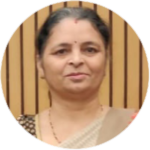 Ayurveda is ancient system of medicine which aims not only in cure of the disease but also prevent the various diseases by following certain principles prescribed daily regimen. Among all the sense organs eyes are considered to be very important because vision is crucial for social and intellectual development of a person. Stating the importance of eyes, it is told that “Once the vision is lost, the different kind of things of the world will all become one kind only that of darkness.”
Ayurveda is ancient system of medicine which aims not only in cure of the disease but also prevent the various diseases by following certain principles prescribed daily regimen. Among all the sense organs eyes are considered to be very important because vision is crucial for social and intellectual development of a person. Stating the importance of eyes, it is told that “Once the vision is lost, the different kind of things of the world will all become one kind only that of darkness.”
“FOOD THY BE THE MEDICINE”
Ayurveda greatly emphasizes the consumption of wholesome diet (Pathya), the rules & principles governing for dieting (Ahara vidhi). Ahara is the first pillar along with sleep and Brahmcharya, which are the basis of healthy life. As per Ayurveda food comprising of food items of all six tastes, is advised for the total nourishment of the body. If one consumes food of all six tastes (Shadrasa) i.e. sweet (Madhura), sour (Amla), salt (Lavana), bitter (Tikta), pungent- hot (Katu) and asthringent (Kashaya); and with this he/she automatically gets required carbohydrates, fat, proteins, micronutrients and vitamins which are considered essential for the health of body.
Ayurveda recommends the consumption of foods beneficial for eye i.e., Pathya for eye in the name of Chakshushya, few examples are given below:
Cereals & Pulses: Red variety of rice, Wheat, Barley, Millets, Green gram (Mudga) and soya bean. The preparations of these to be added with rock salt (Saindhava – Sendha namak) and fat (Ghee) to make them easily digestible and to avoid abdominal discomfort which occurs after taking protein rich diet.
Fruits: Amla, mango, grapes, lemon, orange, guava, papaya, apple, pomegranate.
Fat: animal fat – Cow’s and Buffalo’s ghee but out of these two, cow ghee is considered as best for eye health.
Oil – Mustard oil (Sarshapa taila), Coconut oil (Narikela taila), Sesamum oil (Tila Taila).
Meat – Flesh of goat, Rohita (a variety of fish) etc.
Milk – Mothers milk is the best, other choice are milk of cow, goat and elephant (if available).
Sweetening agents – Honey (Makshika & Kshoudra varieties), jaggery and candy sugar (Kallu sakre).
Green leafy vegetables & Eye: Jeevanthi (known as dodi in North India), Agasthi, Patola, Carrot, Kalashaka (curry leaf), Sígru (Moringa-Drum Stick), Tanduleeyaka (amaranthus), Spinach, Dhanyaka (Coriander), Palandu (Onion), un-ripened banana, radish etc.
Cereals are source of carbohydrates, and vitamins like Vitamin B12, pulses are source of protein and very important for persons taking vegetarian diet. Fruits are rich in sugar, different vitamins and micro nutrients. Oils and ghee are rich in Vit A, E, D & K which are essential for keeping eyes healthy as well as brain health.
Green leafy vegetables are rich in vitamins A, C & E (Antioxidants) and many are good sources of Iron, Calcium and other micronutrients as well. Blue region of the visible light is the most damaging wavelengths of light to which the retina is routinely exposed, that may cause damage to the macula that creates the sharpest vision. Antioxidants rich in the green leafy vegetables are recognized as a key factor in maintaining the health of the macula.
Items to Avoid: Certain food items like vinegar, chilies, pickles, liquor, etc. are told as harmful for the heath of eye.
Heathy practices for maintaining the health of eye are Nasya, Anjana, and use of Triphala for eye wash as well as internally. Nasya is Nasal instillation of 2 – 2 drops of either sesame oil, mustard oil or desi ghee in both the nostrils twice or thrice a day. When practiced regularly, this practice improves the functioning of eyes as well as other sense organs, prevents premature wrinkles, greying of hairs and give many more benefits. Anjana – Kajal was very common practice in India irrespective of caste or creed, daily application of Anjana or home-made Kajal not only makes eyes look beautiful, but also prevents seasonal infections like conjunctivitis etc.
Method of Triphala Eye Wash, a healthy daily practice: Soak 2 pinches of Triphala powder in small glass of water for 2-3 hours or at night time and do eye wash with this water after filtering it. This practice also can be done twice, morning before going out along with cleaning of teeth etc. and in evening after coming back from works. When practiced daily, it protects the eyes from side effects of dust, air pollution etc.
Triphala Rasayana for good vision: For keeping eyes healthy it is advised to lick Triphala churna 3 – 6 grams mixed with either ghee and honey (Ghee and Honey in unequal proportion as per one’s preference) at night before sleep. If one cannot take powder, Triphala ghrita of any standard make available in the market may be used.
So, if one wish to maintain good health of eye and protect from various eye disorders it is advised to have good life style practice and consume healthy diet and avoid unhealthy food habits and life style practices.
Dr. Manjusha Rajagopala
Writer is a Professor and Head, Shalakya Department, All India Institute of Ayurved, Sarita Vihar, New Delhi
ಹೀಗೊಂದು ಅವಲೋಕನ ...
 ನೀವೆಲ್ಲಾ ದಿನ ಪತ್ರಿಕೆ ಓದುವಾಗ ಕೆಲವು ಈ ರೀತಿಯ ಘಟನೆಗಳನ್ನು ದೊಡ್ಡ ದೊಡ್ಡ ಅಕ್ಷರಗಲ್ಲಿ ಓದಿರಬಹುದು…
ನೀವೆಲ್ಲಾ ದಿನ ಪತ್ರಿಕೆ ಓದುವಾಗ ಕೆಲವು ಈ ರೀತಿಯ ಘಟನೆಗಳನ್ನು ದೊಡ್ಡ ದೊಡ್ಡ ಅಕ್ಷರಗಲ್ಲಿ ಓದಿರಬಹುದು…
– ಮುಂಬೈಯಲ್ಲಿ ಒಬ್ಬ ರಿಕ್ಷಾ ಚಾಲಕನ ಮಗಳು CA ಪಾಸು ಮಾಡಿದ್ದಾಳೆ!
– ದೆಹಲಿಯ ಡಿ. ಟಿ.ಸಿ ಡ್ರೈವರನ ಮಗ IIT ಯಲ್ಲಿ ಸೀಟು ಗಳಿಸಿದ್ದಾನೆ!
– ಬೆಂಗಳೂರಿನ ದಿನಕೂಲಿಯವನ ಮಗಳು BE ಪಾಸು ಮಾಡಿದ್ದಾಳೆ!
ಹೀಗೆ ಇನ್ನೂ ಅನೇಕ ಇದೆ ರೀತಿಯ ಸುದ್ದಿಗಳನ್ನು ಓದುತ್ತಿರಬಹದು. ನಿಮಗೆ ಈ ಸುದ್ದಿಗಳನ್ನು ಓದಿ ಸಂತೋಷದ ಜೊತೆಗೆ ಆಶ್ಚರ್ಯವೂ ಆಗಿರಬಹುದು! ನನ್ನ ಪ್ರಶ್ನೆ ಅಥವಾ ಕುತೋಹಲ ಈ ಸುದ್ದಿಗಳ ಬಗ್ಗೆ ಅಲ್ಲ . ನನ್ನ ಜಿಜ್ಞಾಸೆ ಏನೆಂದರೆ – ಈ ರೀತಿಯ ಘಟನೆಗಳು ನಮ್ಮಲ್ಲಿ ಎಷ್ಟು ನಡೆಯತ್ತಿವೆ, ಆದರೆ ನಾವು ಯಾಕೆ ನಮ್ಮ ಸಾಧನೆ ಅಥವಾ ಸಾಹಸವನ್ನು ಪ್ರಚಾರ ಮಾಡುವದಿಲ್ಲ? ನನ್ನ ಈ ಜಿಜ್ಞಾಸೆಯನ್ನು ಇನ್ನೂ ವಿವರವಾಗಿ ಹೇಳಲು ಪ್ರಯತ್ನಿಸುತ್ತೇನೆ:
ಗೋಕರ್ಣ ಮಂಡಲದ ಹಲವಾರು ಸದಸ್ಯರ, ನನ್ನನ್ನೂ ಸೇರಿಸಿ, ಹಿನ್ನೆಲೆ, ಅವರು ನಡೆದು ಬಂದ ದಾರಿ, ಅವರಿಗೆ ಎದುರಾದ ಸಮಸ್ಯೆ, ಹೀಗೆ ಮುಂತಾದವಗಳನ್ನು ಪರಿಶೀಲಿಸೋಣ. ಹೆಚ್ಚು ಕಡಿಮೆ ಎಲ್ಲರೂ (೧-೨% ಕುಟುಂಬಗಳನ್ನು ಬಿಟ್ಟು) ಒಟ್ಟು ಕುಟುಂಬಗಳಲ್ಲಿ ಬೆಳೆದವರು, ದೂರ ದೂರದ ಶಾಲೆಗೆ ಬರಿ ಕಾಲಲ್ಲಿ ಮಳೆಯ ರಾಡಿಯಲ್ಲಿ ಎದ್ದು ಬಿದ್ದು ಹೋದವರು, ಮತ್ತೆ ಕೇವಲ ಪರೀಕ್ಷೆಯ ಹಿಂದಿನ ದಿನ ಮಾತ್ರ ಓದಿ ಪರೀಕ್ಷೆ ಬರೆದವರು. ಪಾಪ, ಅಪ್ಪ-ಅಮ್ಮಂದಿರು ಬಹಳ ಓದಿದವರಲ್ಲ, ಹಾಗಾಗಿ, ಮಕ್ಕಳ ವಿದ್ಯಾಭ್ಯಾಸ ಅವರ ತಲೆಬಿಸಿಯೇ ಅಲ್ಲ! ಎಲ್ಲರ ಮನೆಯ ಹಿರಿಯರ ಮೂಲ ಉದ್ದೇಶ – ಹುಡುಗರು ಶಾಲೆಗೆ ಹೋಗಲೇಬೇಕು, ಇಲ್ಲವಾದಲ್ಲಿ ಮನೆಯಲ್ಲಿ ಗಲಾಟೆ, ಮತ್ತೆ ಮದ್ಯಾಹ್ನದ ಊಟದ ನಂತರದ ನಿದ್ದೆ ಹಾಳು!
ಮಕ್ಕಳು ಸರಿಯಾಗಿ ಓದಿ ಮುಂದೆ ಹೋದರೆ ಅವರ ಅದೃಷ್ಟ. ಇಲ್ಲಾ ಅಂದರೆ, ತೋಟಕ್ಕೆ ಇನ್ನೊಂದು ಹೊಸ ಆಳು ಮನೆಯಲ್ಲೇ ತಯಾರು!
ಅಕಸ್ಮಾತ್ ಶಾಲೆಯಲ್ಲಿ ಚೆನ್ನಾಗಿ ಓದಿ ಪಾಸಾದರೆ, ಬಹುತೇಕ ಕುಟುಂಬಗಳಲ್ಲಿ ಮಕ್ಕಳನ್ನು ಕಾಲೇಜಿಗೆ ಕಳುಹಿಸವ ಆರ್ಥಿಕ ತಾಕತ್ತು ಇರಲಿಲ್ಲ ಅಥವಾ ಮನಸ್ಸಿರಲಿಲ್ಲ. ಹಾಗಾಗಿ, ಕೆಲವೇ ಜನರು ತಮ್ಮ ಸ್ವಪ್ರಯತ್ನ ಯಾ ಸ್ವಇಚ್ಛೆಯಿಂದ ಮುಂದೆ ಓದಲು ಪ್ರಯತ್ನ ಪಟ್ಟಿದ್ದಾರೆ. ಸಣ್ಣ ಪುಟ್ಟ ಸ್ಕಾಲರ್ಷಿಪ್ ಅಥವಾ ಮನೆಯಿಂದ ಸಹಾಯ ಕೇಳಿ ಓದಿದ ಘಟನೆಗಳು ಸಾಕಷ್ಟಿವೆ. ಆ ದಿನಗಳಲ್ಲಿ ನೀವು ಮೈಸೂರು ಅಥವಾ ಧಾರವಾಡಕ್ಕೆ ಭೇಟಿ ಕೊಟ್ಟಿದ್ದರೆ, ನಿಮಗೆ ಈ ವಿಷಯ ಅರ್ಥವಾಗಿರಬಹದು.
ವಿದ್ಯಾರ್ಥಿಗಳು ಒಂದು ಚಿಕ್ಕ ಬಾಡಿಗೆ ಕೊಠಡಿಯಲ್ಲಿ ಇದ್ದು, ಅವರೇ ಸ್ವಂತ ಅಡುಗೆ ಮಾಡಿಕೊಂಡು, ಸಣ್ಣ ಪುಟ್ಟ ಟ್ಯೂಷನ್ ಹೇಳಿ, ತಮ್ಮ ವಿದ್ಯಾಭ್ಯಾಸ ಮುಂದುವರಿಸುವದು ಸರ್ವೇ ಸಾಮಾನ್ಯವಾಗಿತ್ತು. ಕಾಲೇಜು ಹಾಸ್ಟೆಲ್ ಸೌಲಭ್ಯ ಸಾಧ್ಯವಿದ್ದರೂ, ಅದು ತಮ್ಮ ಖರ್ಚಿಗೆ ನಿಲುಕುವದಲ್ಲ ಅಂತ ಮನವರಿತು, ೩-೪ ಊರಿನ ಹುಡುಗರು ಸೇರಿ ಇರುವದು ಸಹಜವಾಗಿತ್ತು. ಊರಲ್ಲಿ ಆರ್ಥಿಕ ಸ್ಥಿತಿ ಸರಿ ಇಲ್ಲದಿದ್ದರಿಂದ, ಮನೆಯ ಸಹಾಯ ಹೆಚ್ಚಾಗಿ ನಿರೀಕ್ಷಿಸುತ್ತಿರಲಿಲ್ಲ. ಆಗ, ಊರಲ್ಲಿ ಪ್ರತಿಯೊಬ್ಬರ ಸಂಸಾರ ಬಹಳ ದೊಡ್ಡದು, ಆದರೆ ವಾರ್ಷಿಕ ಉತ್ಪನ್ನ ಬಹಳ ಕಡಿಮೆ. ಆಗಾಗ ಬರುವ ಮುಂಜಿ ಮದುವೆ ಇನ್ನೂ ಆರ್ಥಿಕ ಪರಿಸ್ಥಿತಿಯನ್ನು ಹದಗೆಡಿಸುತ್ತಿತ್ತು. ಹಾಗಾಗಿ, ಎಲ್ಲರೂ ಓದಿ ಮುಂದುವರಿದ ಸ್ಥಳ ಅಂದರೆ, ಉಚಿತ ಬ್ರಾಹ್ಮಣ ವಸತಿ ನಿಲಯ, ಅನಾಥಾಲಯ, ಹೋಟೆಲ್ನಲ್ಲಿ ಅಥವಾ ದಾನಿಗಳ ಮನೆಯಲ್ಲಿ ವಾರಾನ್ನ, ಇಲ್ಲವೇ ತಮ್ಮ ರೂಮಿನಲ್ಲಿ ಸ್ವಂತ ನಳಪಾಕ!
ಇವೆಲ್ಲಾ ಸಮಸ್ಯೆಗಳಿದ್ದರೂ, ಅದನ್ನೆಲ್ಲಾ ಲೆಕ್ಕಿಸದೆ, ಏಕಾಗ್ರಚಿತ್ತದಿಂದ ಹಗಲೂರಾತ್ರಿ ಓದಿ ಬೇರೆ ಪಟ್ಟಣದ ಮಕ್ಕಳೊಂದಿಗೆ ಪೈಪೋಟಿ ನೆಡೆಸಿ ಯಶಸ್ಸನ್ನು ಕಂಡವರು ಬಹಳ. ಈ ದೃಷ್ಟಿಯಿಂದ ನೀವು ಇವತ್ತು ಗೋಕರ್ಣ ಮಂಡಲದ ಹಲವಾರು ಸದಸ್ಯರನ್ನು ಆಳವಾಗಿ ಅಧ್ಯಯನ ನಡೆಸಿದರೆ, ಅವರ ಇವತ್ತಿನ ಯಶಸ್ಸಿನ ಹಿಂದಿನ ಶ್ರಮ ಹಾಗೂ ಸಾಹಸ ನಿಮಗೆ ಸರಿಯಾಗಿ ಅರ್ಥವಾಗಬಹುದು. ನನ್ನ ದೃಷ್ಟಿಯಲ್ಲಿ ಪ್ರತಿಯೊಬ್ಬ ಸದಸ್ಯನೂ ಈ ಮೆಚ್ಚಿಗೆಗೆ ಅಹ್ರನಾಗುತ್ತಾನೆ. ಆದರೆ, ನಾ ಈ ಮೊದಲು ಹೇಳಿದಂತೆ, ನಮಗೆ ನಮ್ಮ ಸಾಧನೆಯನ್ನು ಪ್ರಚಾರ ಮಾಡಿಕೊಳ್ಳುವ ಅಭ್ಯಾಸ ಸ್ವಲ್ಪ ಕಡಿಮೆ!
ನಮಗೆಲ್ಲಾ ತುಂಬಾ ಹೆಮ್ಮೆಯ ವಿಷಯವೆಂದರೆ, ಇಷ್ಟು ಕಷ್ಟದಲ್ಲೂ ಓದಿ ಮುಂದೆ ಬಂದು, ಇವರೆಲ್ಲಾ ಬೇರೆ ಬೇರೆ ಊರಿನಲ್ಲಿ ಯಾ ದೊಡ್ಡ ದೊಡ್ಡ ಪಟ್ಟಣಗಳಲ್ಲಿ ವಲಸೆ ಹೋಗಿ ಹಲವಾರು ಕ್ಷೇತ್ರಗಳಲ್ಲಿ ಕೆಲಸ ಮಾಡುತ್ತಾ ಒಳ್ಳೆಯ ಹೆಸರುಗಳಿಸುತ್ತಿದ್ದಾರೆ. ಕೇವಲ ತಮ್ಮ ಬುದ್ದಿವಂತಿಕೆಯಿಂದಲ್ಲ, ಪ್ರಾಮಾಣಿಕತೆಯಲ್ಲೂ ತಮ್ಮದೇ ಆದ ರೀತಿಯಲ್ಲಿ ಉನ್ನತ ಸ್ಥಾನಕ್ಕೇರಿದ್ದಾರೆ. ಹಾಗಾಗಿ ಭಾರತದ ಬೇರೆ ಬೇರೆ ಪಟ್ಟಣಗಳಲ್ಲಿ ಹಲವಾರು ವರ್ಷಗಳಿಂದ ವಾಸವಾಗಿರುವ ನಮ್ಮವರನ್ನು ನಾವು ನೋಡಬಹುದು. ನಿಮಗೆ ನೆನಪಿರಬಹುದು – ೫೦ ರ ಅಥವಾ ೬೦ ರ ದಶಕದಲ್ಲಿ ಕೇವಲ ದೂಡ್ಡ ಪಟ್ಟಣಗಳಾದ ಬೆಂಗಳೂರು, ಚೆನ್ನೈ, ಅಥವಾ ಮುಂಬೈ ಗಳಿಂದ ಮಾತ್ರ ವಿದೇಶಕ್ಕೆ ವಿದ್ಯಾಭ್ಯಾಸಕ್ಕಾಗಿ ಹೋಗುವ ಸುದ್ದಿ ಸಿಗುತ್ತಿತ್ತು. ಆದರೆ, ೭೦ ರ ಅಥವಾ ೮೦ ರ ದಶಕದಲ್ಲಿ, ನಮ್ಮ ಹಳ್ಳಿಯಿಂದ ಓದಿದವರು, ಬೇರೆ ಬೇರೆ ದೇಶಕ್ಕೆ ಹೋಗಿ ಚೆನ್ನಾಗಿ ಓದಿ, ಒಳ್ಳೆಯ ಹೆಸರು ಮಾಡಿದ್ದನ್ನು ನೋಡಬಹುದು. ಈ ದಶಕದಲ್ಲಂತೂ, ಹೊರ ದೇಶಕ್ಕೆ ಓದಲು ಹೋಗುವದು ಸರ್ವೇ ಸಾಮಾನ್ಯ!
ಇನ್ನೊಂದು ಅತೀ ಹೆಮ್ಮೆಯ ವಿಷಯವೆಂದರೆ, ಒಳ್ಳೆಯ ಯಶಸ್ಸು ಗಳಿಸಿದ ನಮ್ಮವರು, ತಮ್ಮ ಸಾಧನೆಯನ್ನು ಕೇವಲ ತಮ್ಮಲ್ಲಿಯೇ ಇಟ್ಟುಕೊಳ್ಳಲಿಲ್ಲ. ಬಹಳಷ್ಟು ಜನರು ಆರ್ಥಿಕವಾಗಿ ಯಾ ಮಾರ್ಗದರ್ಶಿಯಾಗಿ, ತಮ್ಮ ಕುಟುಂಬದ ಸದಸ್ಯರಿಗೆ, ತಾವು ಹುಟ್ಟಿ ಬೆಳೆದ ಮನೆಗೆ, ತಾವು ಓದಿದ ಶಾಲೆಗೆ ಅಥವಾ ತಮ್ಮ ಹಳ್ಳಿಗೆ ಹಲವಾರು ರೀತಿಯಿಂದ ಸಹಾಯ ಮಾಡುತ್ತಿದ್ದಾರೆ. ಇದರಿಂದ ಮುಂದಿನ ಪೀಳಿಗೆಗೆ ಓದಿ ಮುಂದೆ ಬರಲು ಸಹಾಯವಾಗುತ್ತಿದೆ.
ಮುಂದೇನು?
ಇನ್ನು ಮುಂದೆ, ನಾವು ಹುಟ್ಟಿ, ಓದಿ ಬೆಳೆದ ಹಳ್ಳಿಗಳಲ್ಲಿ ಸಮಸ್ಯೆ ಬೇರೆ ರೀತಿಯಾಗಬಹುದು. ನಾವೇ ನೋಡುತ್ತಿದಂತೆ ಈಗ ಹಳ್ಳಿಗಳಲ್ಲಿ ಮನೆಗಳಲ್ಲಾಖಾಲಿ ಖಾಲಿ! ಕೇವಲ ವೃದ್ಯಾಪ್ಯಕ್ಕೆ ಜಾರಿದ ದಂಪತಿಗಳು ಅಥವಾ ಕೆಲವೇ ಕೂಲಿ ಮಾಡುವ ಸಂಸಾರವನ್ನು ಕಾಣಬಹದು. ಹಳ್ಳಿಗಳ ಸಮಸ್ಯೆ ಗಂಭೀರವಾಗುತ್ತಿದೆ. ತೋಟ ಗದ್ದೆ ಮಾಡಲು ಕೆಲಸದವರಿಲ್ಲ. ಹೆಚ್ಚಿನ ಕೂಲಿಯ ಆಸೆಯಿಂದ ಕೆಲಸಗಾರರು ಹತ್ತಿರದ ಪಟ್ಟಣಕ್ಕೆ ವಲಸೆ ಹೋಗುತ್ತಿದ್ದಾರೆ ! ಬಹಳಷ್ಟು ಗದ್ದೆ ತೋಟ ಹಾಳಾಗುತ್ತಿವೆ. ಇಷ್ಟಲ್ಲದೆ, ಶಾಲೆಯ ಸಮಸ್ಯೆ ಇನ್ನೊಂದು ರೀತಿ – ಹಳ್ಳಿಗಳಲ್ಲಿ ಶಾಲೆಗೆ ಹೋಗಲು ಮಕ್ಕಳಿಲ್ಲ. ನಾವೆಲ್ಲಾ ಶಾಲೆಗೆ ಹೋಗುವಾಗ ಒಂದು ಕ್ಲಾಸ್ಸಿನಲ್ಲಿ ೩೦-೪೦ ಮಕ್ಕಳು ಸಾಮಾನ್ಯ. ಆದರೆ, ಇಂದು ಅದೇ ಕ್ಲಾಸ್ಸಿಗೆ ೧೦-೧೨ ಮಕ್ಕಳನ್ನು ಒಟ್ಟು ಮಾಡುವದು ಮಾಸ್ತರಿಗೆ ಕಷ್ಟ!
ಅಂದರೆ, ಇನ್ನು ಮುಂದೆ ಹಳ್ಳಿಗಳಿಗೆ ನಮ್ಮೆಲ್ಲರ ಸಹಾಯ ಬೇರೆ ರೀತಿಯಿಂದ ಆಗಬೇಕಾಗಿದೆ. ಉದಾಹರಣೆಗೆ, ವೃದ್ಯಾಪ್ಯಕ್ಕೆ ಕಾಲಿಟ್ಟ ನಮ್ಮ ಹಿರಿಯರನ್ನು ನೋಡಿಕೊಳ್ಳುವ ವ್ಯವಸ್ಥೆ. ಅವರ ಆರೋಗ್ಯ ಬೇಕಾದ ಆಸ್ಪತ್ರೆ ಹಾಗು ಔಷದಿ, ಮತ್ತೆ ಅವರನ್ನು ನೋಡಿಕೊಳ್ಳಲು ಜನ. ಹಾಗೆಯೇ, ನಮ್ಮ ಹಿರಿಯರಿಗೆ ಸಣ್ಣ ಪುಟ್ಟ ಮನರಂಜನೆ ಯಾ ಒಕ್ಕೂಟ. ಅದೇ ರೀತಿ, ನಮ್ಮ ಹಿರಿಯರು ಮಾಡಿದ ಜಮೀನು ಕಾಪಾಡಿಕೊಂಡು ಹೋಗುವದು. ಇಲ್ಲವಾದಲ್ಲಿ, ಇನ್ನು ಕೆಲವೇ ವರ್ಷಗಲ್ಲಿ ನಮ್ಮ ಆಸ್ತಿ ಬೇರೆ ಯಾರದೋ ಕೈ ಸೇರಬಹುದು. ಕೊನೆಯದಾಗಿ, ನಮ್ಮ ಯುವ ಪೀಳಿಗೆಗೆ, ಹಳ್ಳಿಯಲ್ಲೇ ಇದ್ದು ಬೇರೆ ಬೇರೆ ಸಣ್ಣ ಸಣ್ಣ ಉದ್ಯೋಗವನ್ನು ಕಲ್ಪಿಸುವ ವಿಚಾರವನ್ನು ಮಾಡಬೇಕಾಗಿದೆ.
ಅಂತೂ, ನಮ್ಮ ಪ್ರೀತಿಯ ಹಳ್ಳಿ, ನಮ್ಮ ಹಿರಿಯರು, ನಮ್ಮ ಕೃಷಿಯನ್ನು ಕಾಪಾಡುವದು, ಓದಿ ಮುಂದೆ ಬಂದ ನಮ್ಮಂತವರ ಕೈಲ್ಲಿದೆ. ಇದಕ್ಕೆ, ಎಲ್ಲರ ಯೋಚನೆ, ಯೋಜನೆ ಹಾಗೂ ಸಹಕಾರದ ಅಗತ್ಯವಿದೆ.
ಡಾ. ಶ್ರೀಪಾದ ಭಟ್
ಗುರುಗ್ರಾಮ್, ಹರ್ಯಾಣ
ಅಂದು ಇಂದು, ಎಂದು?
ಅಂದು ಎಂದೂ ಮಾತಾಡುತ್ತಿರಲಿಲ್ಲ
’ಯಾರೊಂದಿಗೆ?’- ಎಂದು ನೆನಪಿಸಬೇಕಾಗಿಲ್ಲ
ಇಂದು ಅವಕ್ಯಾಕೋ ಅವಕಾಶವೇ ಬರುತ್ತಿಲ್ಲ
ಇಷ್ಟು ವರ್ಷ ಕಳೆದರೂ ಇದು ಯಾಕೆ ಅನಿಸಿರಲಿಲ್ಲ?
ಲವಲವಿಕೆಯೋ ಮನ ತುಂಬಾ ಇತ್ತು
ಕಣ್ ಸನ್ನೆಯಲ್ಲೇ ಸ್ನೇಹದ ಬೆಸುಗೆಯಿತ್ತು
ಎದುರು ಬಂದರೂ ಕೈ ಸನ್ನೆಯೊಂದಿಗೆ
ತಲೆಯಾಡಿಸುವುದೇ ಒಂದು ವೃತ್ತಿಯಾಗಿತ್ತು
ಹಂಚಿಕೊಳ್ಳಲಿಕ್ಕೋ, ವಿಷಯಗಳೆಷ್ಟೋ?
ನಡಿಕೆ, ನುಡಿಕೆ, ವಿಧ ವಿಧ ಜಡೆಗಳ ಮುಡಿಕೆ
ಬಣ್ಣದ ಸೀರೆ, ಹೊಸ ಹೊಸ ಪ್ಯಾಂಟಿನ ಆಡಂಬರಿಕೆ
ವಾಚೋ, ಬೂಟೋ, ಹರಟೆಯೋ, ಕೆಣಸುವ ನಡಿಕೆ
ಎರಡು ಬೆಂಚಿನ ಸಾಲು ತುಂಬಿ
ಹುಡುಗರೋ ಕಾಲು ನೀಡಿ ಹಂಚ್ಕೊಂಡಿದ್ರೆ
ಒಂದೇ ಸಾಲಿನ ಬೆಂಚಲ್ಲಿ ತುರುಕಿ
ಹುಡುಗಿಯರೆಲ್ಲಾ ಹಿಂಡಿಕೊಳ್ತಿದ್ರು
ಗುರುಗಳಿಗೆ ಮಾತ್ರ ಎಲ್ಲರೂ ಒಂದೇ
ಪ್ರಶ್ನೆ ಕೇಳಿ ಸುತ್ತೆಲ್ಲ ಕಣ್ಣರಳಿಸಿದರೆ
ಉತ್ತರ ಬರುವುದು ಹುಡುಗಿಯರಿಂದೇ
ತಲೆಯಾಡಿಸಿ ಸರಿ ಎನ್ನುವುದೇ ಹುಡುಗರ ದಂಧೆ
ವಾರ್ಷಿಕ ಉತ್ಸವ ಅದೆಂಥ ಸಂಭ್ರಮ!
ಹುಡುಗಿಯರಷ್ಟೇ ಹುಡುಗರೂ ಮುಂದೆ
ಹಂಚಿಕೊಂಡೆವು ಕೆಲಸವೆಲ್ಲ ಕರ್ತವ್ಯದಂತೇ
ತಂದೆವು ಶಾಲೆಯ ಶ್ರೇಷ್ಠ ಪ್ರಶಸ್ತಿಯ ಪದಕೆ
ಕಳೆದ ದಿನಗಳು ತಿರುಗಿ ಮತ್ತೆಂದೂ ಬರುವದಿಲ್ಲ
ಮುಂದಿನ ದಿನಗಳೋ ಇನ್ನೆಷ್ಟಿದೆಯೋ ಗೊತ್ತಿಲ್ಲ
ಬುದ್ಧನು ಅಂದಂತೆ, ’ಇಂದಿನ ದಿನಗಳಲ್ಲಿಯೇ
ಒಂದಾಗಿ ಬದುಕಲು ಕಲಿಯಬೇಕಲ್ಲವೇ’?
ನಾವೆಲ್ಲ ಒಂದೇ ಮಾರಿಕಾಂಬಾ ಶಾಲೆಯ ಮಕ್ಕಳು
ಅಂದಿನ ದಿನಗಳು ಬರದಿದ್ದರೂ ಮುಂದಾಗಬೇಕು
ಹುಡುಗ-ಹುಡುಗಿಯರ ಕಣ್ಣು-ಬೆರಳು ಸನ್ನೆಗಿಂತ
ಮಾತು ಬೆಳೆಸಿ ವಿಚಾರ ಹರಿಸಿ ಒಂದಾಗಬೇಕು
ದಿನಗಳಿವೆ, ಆ ದಿನಗಳನು ಮರುಕಳಿಸಲು
ಇನ್ನಾದರೂ ನಮ್ಮಲ್ಲಿಯ ಸ್ನೇಹ ಬೆಳೆಯಲಿ
ವಿಚಾರ, ಆಚಾರ, ಭಾವನೆಗಳ ನದಿ ಹರಿದಾಡಲಿ
ಸುಖ-ದುಃಖ ಹಂಚಿಕೊಂಡು ಸಮತೆ ಬಾಳಾಗಲಿ
ಡಾ. ಗೋಪಾಲ ಕೃಷ್ಣ ಕಡೇಕೋಡಿ
(Prelude: About six to seven decades back, in co-ed high schools, the boys as a group, as much as the girls, never used to talk to the other group. Yet, all the classroom activities- be they competitions, sports, cultural activities, or other school activities, were carried out smoothly and efficiently. Reflecting flashbacking today, back to those days from his Shri Marikamba High School, Sirsi, the author has scribbled this poem.)
ಆಲೆಮನೆ
ಉತ್ತರಾಯಣ ಆರಂಭವಾಗುತ್ತಿದ್ದಂತೆ ಹವ್ಯಕರ ಮನೆಯಲ್ಲಿ ಅಡಿಕೆ ಕೊಯ್ಲು ಸರ್ವೇ ಸಾಮಾನ್ಯ. ಆದರೆ ಆಲೆಮನೆ ಮಾತ್ರ ಅತಿ ವಿಶೇಷ ಮತ್ತು ವಿಶಿಷ್ಟ. ಹಾಗೆಂದು ಪ್ರತಿ ಮನೆಯಲ್ಲಿಯೂ ಆಲೆಮನೆ ನಡೆಯದು. ಆಲೆಮನೆ ಎಂದರೆ ಕಬ್ಬಿನ ಹಾಲಿನ ಮನೆ. ಕಬ್ಬನ್ನು ಸಂಸ್ಕರಿಸಿ, ಹಾಲನ್ನು ತೆಗೆದು, ಕೊಪ್ಪರಿಗೆಯಲ್ಲಿ ಕಾಯಿಸಿ, ಬೆಲ್ಲವನ್ನು ಮಾಡುವ ಮನೆಯೇ ಆಲೆಮನೆ.


ಮೊದಲೆಲ್ಲಾ ಎಲ್ಲರ ಮನೆಯಲ್ಲಿ ಗದ್ದೆ ಇರುತ್ತಿತ್ತು. ದನ-ಕರುಗಳು, ಎತ್ತು, ಕೋಣಗಳನ್ನು ಸಾಕುವ ಪರಿಪಾಠಿಯಿತ್ತು. ಗದ್ದೆಯಲ್ಲಿ ಎತ್ತು, ಕೋಣಗಳ ಸಹಾಯದಿಂದಲೇ ಉಳುಮೆ ಮಾಡುವ ಪದ್ಧತಿಯಿತ್ತು. ಹಾಗೆಯೇ ಪ್ರತಿಯೊಬ್ಬರೂ ಅವರವರ ಗದ್ದೆಯಲ್ಲಿ ಕಬ್ಬನ್ನೂ ಬೆಳೆಯುತ್ತಿದ್ದರು. ಕಬ್ಬನ್ನು ಸಂಸ್ಕರಿಸಿ ಹಾಲು ತೆಗೆಯಲು ಕೋಣದ ಗಾಣವನ್ನು ಉಪಯೋಗಿಸುತ್ತಿದ್ದರು. ದೊಡ್ಡ ದೊಡ್ಡ ಜಮೀನ್ದಾರರು ತಿಂಗಳುಗಟ್ಟಲೆ ಆಲೆಮನೆಯನ್ನು ಮಾಡುತ್ತಿದ್ದರು.
ಆದರೆ ಈಗ ಹಳೆಯ ಆಲೆಮನೆಗೆ ಆಧುನಿಕತೆಯ ಮಿಶ್ರಣವಾಗಿದೆ. ಊರಿನ ಗದ್ದೆಗಳು ಅಡಿಕೆ ತೋಟವಾಗಿ ಮಾರ್ಪಾಡಾಗಿದೆ. ದೊಡ್ಡ ದೊಡ್ಡ ಜಮೀನ್ದಾರರು ಮಾತ್ರ ಹಳೆಯ ರೂಢಿ-ಸಂಪ್ರದಾಯವನ್ನು ಮುಂದುವರಿಸಲು ಕಡಿಮೆ ಪ್ರಮಾಣದಲ್ಲಿ ಆಲೆಮನೆಯನ್ನು ಮಾಡುತ್ತಿದ್ದಾರೆ. ಕೆಲವರು ಸ್ವ- ಸಹಾಯ ಸಂಘವನ್ನು ಮಾಡಿಕೊಂಡು ಆಲೆಮನೆ ಹಬ್ಬವನ್ನು ಮಾಡುತ್ತಿದ್ದಾರೆ. ಹಳೆಯ ಗಾಣ ಹೋಗಿ ಮಷಿನ್ ಗಾಣ ಬಂದಿದೆ. ಕೋಣದ ಬಳಕೆಯನ್ನು ಬಿಟ್ಟು ಟಿಲ್ಲರ್ ಉಪಯೋಗಿಸುತ್ತಿದ್ದಾರೆ. ಆಧುನಿಕತೆ ಮತ್ತು ತಂತ್ರಜ್ಞಾನ ಆಲೆಮನೆಯ ಮೆರುಗನ್ನು ಹೆಚ್ಚಿಸಿದೆ.
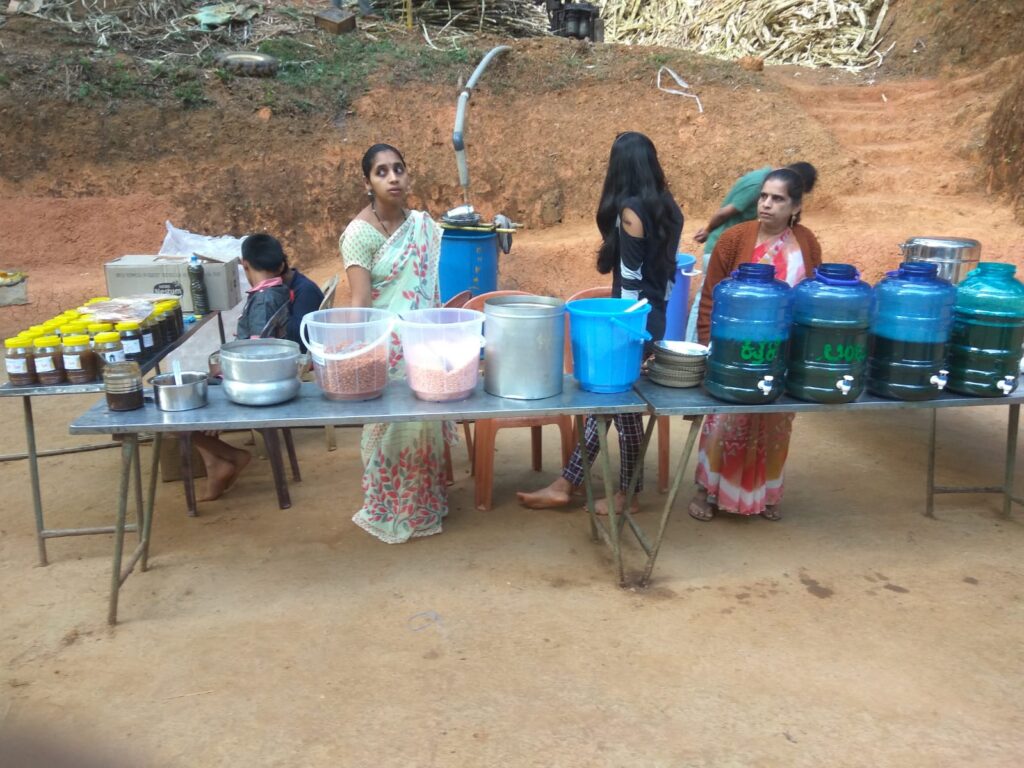
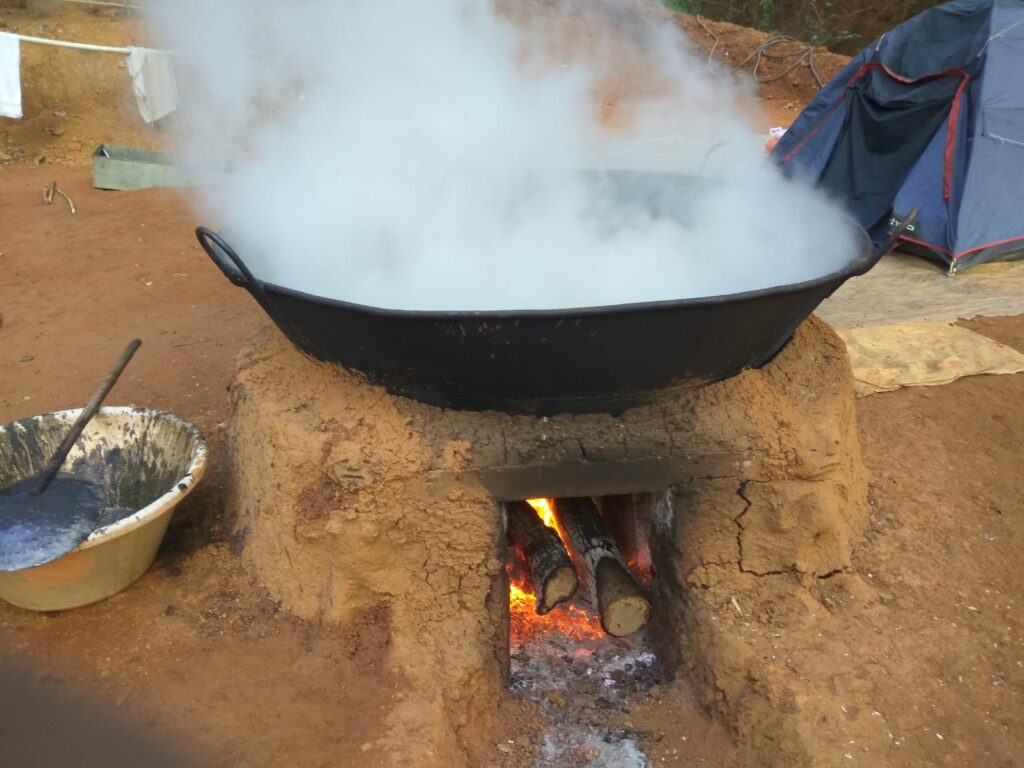
ಸಂಜೆಯಾದಂತೆ ಆಲೆಮನೆಯಲ್ಲಿ ಜನಜಂಗುಳಿ ಹೆಚ್ಚು. ಮಿರ್ಚಿಬಜೆ, ಮಸಾಲೆ ಮಂಡಕ್ಕಿ, ಕರಿದ ಶೇಂಗಾ, ಭಂಗಿಯ ಹಲ್ವಾ, ಖಾರಾ, ಸಂಡಿಗೆ, ಹಪ್ಪಳಗಳು ಕಬ್ಬಿನ ಹಾಲಿಗೆ ಜೊತೆಯಾಗುತ್ತವೆ. ಆಗತಾನೆ ಕೊಪ್ಪರಿಗೆಯಿಂದ ತೆಗೆದ ಬಿಸಿ ಬಿಸಿ ಬೆಲ್ಲವನ್ನು ಸವಿಯುವುದೆಂದರೆ ಮಜವೋ ಮಜ. ಕಬ್ಬಿನಹಾಲನ್ನು ಮಿರ್ಚಿ ಮಂಡಕ್ಕಿಯೊಡನೆ ಸವಿದು, ಬಿಸಿ ಬೆಲ್ಲ ತಿಂದು, ಬಾಟಲಿಗಳಲ್ಲಿ ಕಬ್ಬಿನಹಾಲನ್ನು ತುಂಬಿಸಿ, ಕಬ್ಬಿನ ತುಂಡುಗಳೊಂದಿಗೆ ಮನೆಗೆ ಹಿಂತಿರುಗುವುದು ವಾಡಿಕೆ. ಒಟ್ಟಿನಲ್ಲಿ ಆಲೆಮನೆ ಮತ್ತು ಹವ್ಯಕರದ್ದು ಅವಿನಾಭಾವ ಸಂಬಂಧ.
ಗಣೇಶ ಹೆಗಡೆ, ಅಮಚೀಮನೆ

